Publications search
Journal der Künste 23
Published three times a year (German/English), available free of charge
ISSN (Print EN) 2627-2490
not yet published
The first issue of Journal der Künste under the presidency of Manos Tsangaris and Anh-Linh Ngo focuses on artistic freedom. Texts by Lena Gorelik, Ralf Michaels, Carsten Wurm and others as well as a conversation with Kristóf Kelemen and Gergely Nagy from Hungary address the defence of artistic autonomy from various perspectives. Further contributions provide insights into the genesis of the current exhibitions and the work of the archive.
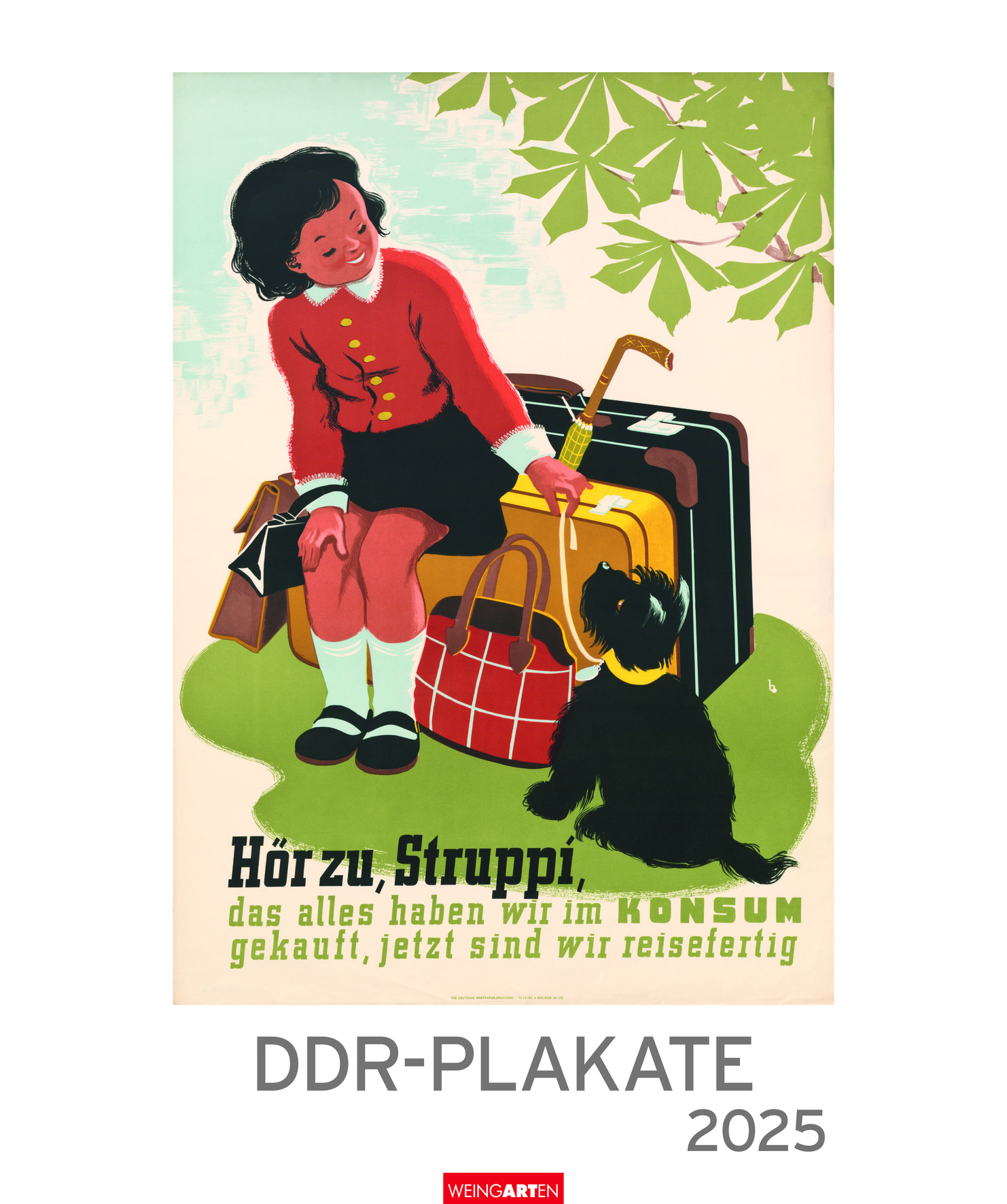
Kalender 2025: DDR-Plakate
Weingarten
Akademie der Künste, Berlin / Athesia Kalenderverlag GmbH, Unterhaching 2024
German, 14 pp.,
12 ill.
ISBN 987-3-839900-92-5
Best.-Nr. 1216
€ 8
What do Putzi, a children’s toothpaste, the Leipzig Zoo and eating yoghurt have in common? They are advertised in the posters selected for the 2025 Calendar of GDR Posters. The Akademie der Künste houses an extensive collection of posters from the early German Democratic Republic, which provides the basis for the annual calendar.
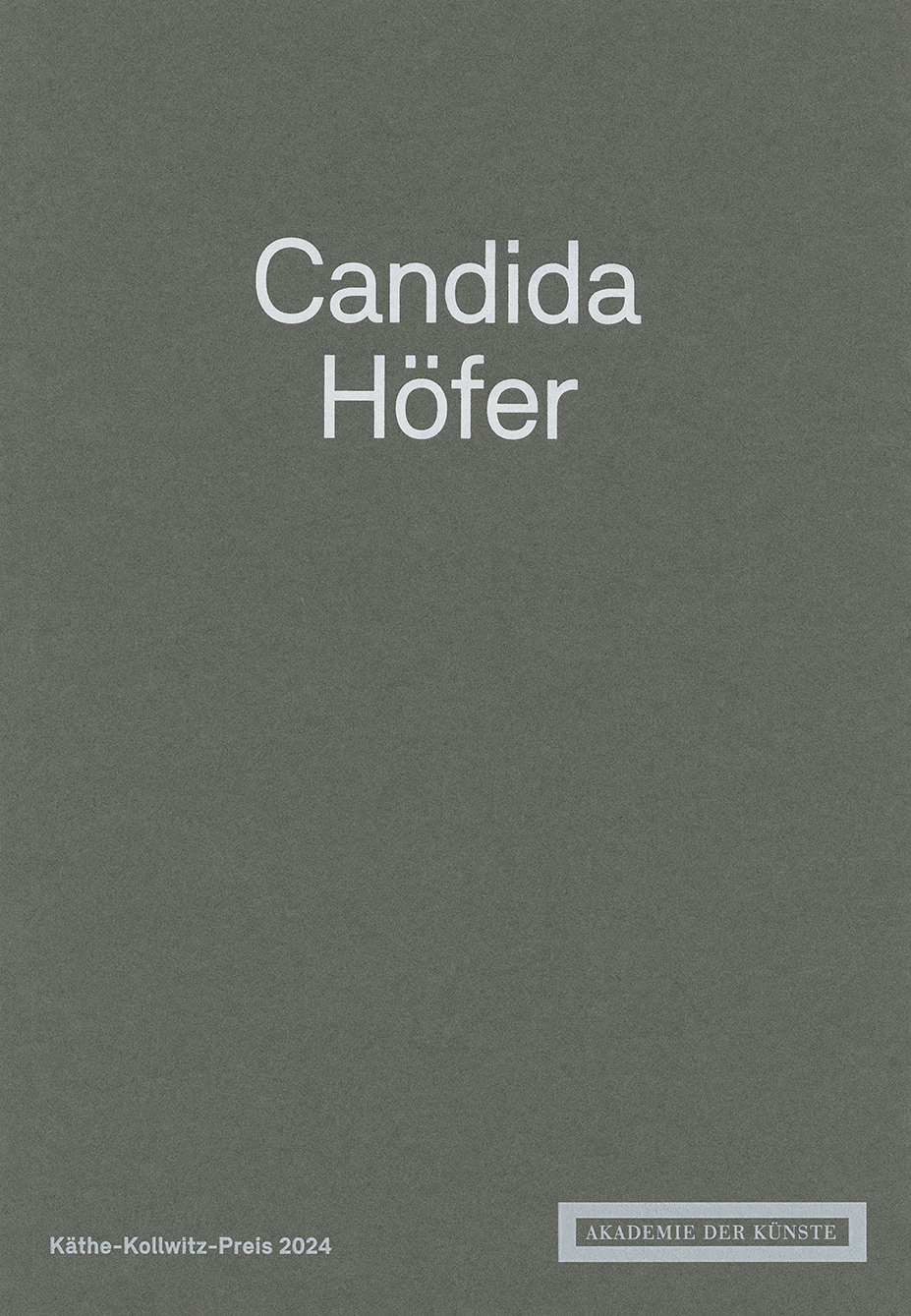
Candida Höfer Käthe-Kollwitz-Preis 2024
Akademie der Künste, Berlin 2024
German/English, 56 pp.,
27 ill.
ISBN 978-3-88331-260-6
Best.-Nr. 9039
€ 10
Candida Höfer’s oeuvre, which has grown over five decades, ranks among the photographic avant-garde of the present day. The large-format images show public and semi-public spaces such as libraries, storage rooms, museums and opera houses – places of encounter, communication, memory and knowledge. They are not architectural photographs, but rather portraits of spaces. Höfer uses them to explore architectural concepts and how they form the human experience. The exhibition catalogue contains numerous illustrations and an essay by Matthias Sauerbruch.
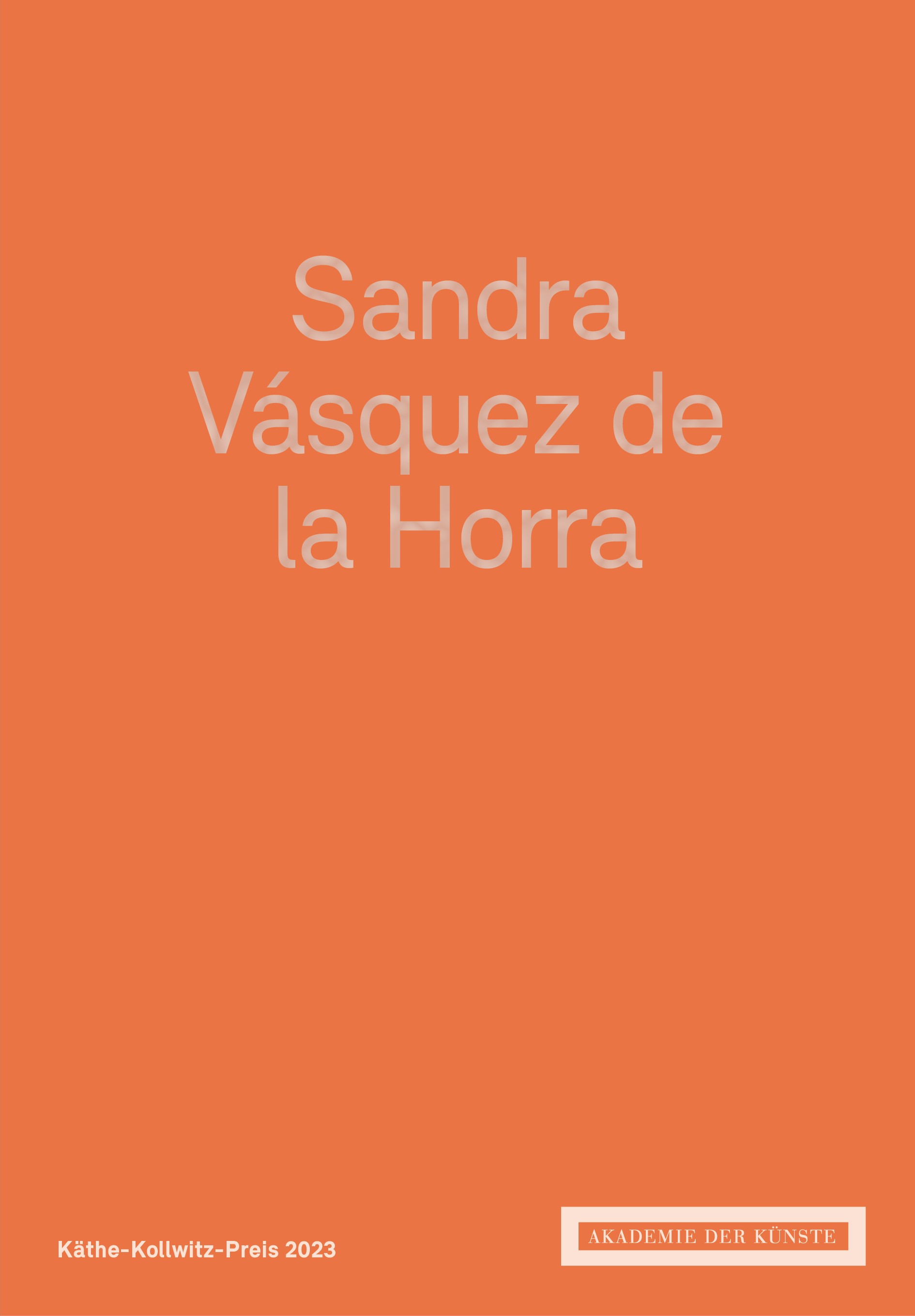
Sandra Vásquez de la Horra Käthe-Kollwitz-Preis 2023
Akademie der Künste, Berlin 2024
Akademie der Künste 2024
German/English, 56 pp.,
33 ill.
ISBN 978-3-88331-259-0
Best.-Nr. 9038
€ 10
Works by the 2023 recipient of the Käthe Kollwitz Prize, Sandra Vásquez de la Horra, focus on conflicts with which societies all over the world are currently grappling. She tackles questions relating to gender and sexuality, intercultural reflections and spiritual practices, confronting them with archetypes of our collective consciousness and social taboos. Human existence is at the centre of her poetic visual world – explicitly, women and the female body. The exhibition catalogue contains numerous illustrations and an essay by Siegfried Zielinski.
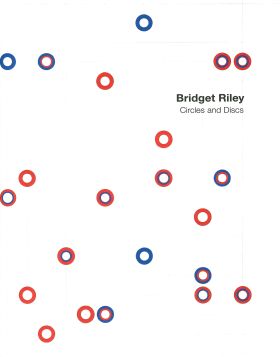
Bridget Riley. Circles and Discs (1961-2023)
Robert Kudielka und Angela Lammert
Holzwarth Publications, Berlin 2024
German/English, 36 pp.,
30 ill.
ISBN 978-3-9471-50-4
Best.-Nr. 1213
€ 15
The exhibition catalogue encompasses all the work studies and paintings in the show – including completely unknown works on paper – investigating for the first time the potential of a single motif running through Bridget Riley’s creative oeuvre: the circle as form. In a brief history, the texts explore this “strictest of all forms” within the scope of its dynamic ability to unfold, the significance of studies, and scalability.

The AI Anarchies Book
Clara Herrmann, Elise Misao Hunchuck, Maya Indira Ganesh on behalf of the Akademie der Künste, Berlin 2024
English
monochrome, with colour section
ISBN 978-3-88331-261-3
Best.-Nr. 1212
€ 22
The AI Anarchies Book sheds light on the debate surrounding AI and ethics from an artistic and scholarly perspective, exploring new approaches to the topic. As documentation, reflection and toolbox, the publication conveys knowledge and background information on the AI Anarchies Autumn Academy (2023) and the artistic projects created within the programme in essays, interviews, image galleries and recipes.

Im Schlangenhain. Nella Serpentara
Clara Herrmann and Anneka Metzger on behalf of the Akademie der Künste, Berlin 2024
German/italian, 336 pp.
monochrome, with colour section and insert
ISBN 978-3-88331-257-6
Best.-Nr. 1211
€ 22
The Serpentara’s 150th anniversary takes a fresh look at this inspirational location. In 1873, artists saved the oak grove in Olevano Romano, Italy, from being cut down. Today, Villa Serpentara is a residence for visiting fellows from the Akademie der Künste. In 15 contributions, Serpentara artists, eyewitnesses and art historians explore the myth, visual motif and stories surrounding the famous oak grove, offering new approaches to its history.
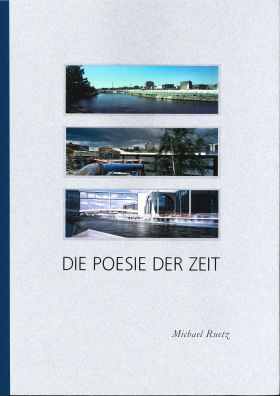
Michael Ruetz
Poesie der Zeit
éditions facteur cheval, Berlin 2024
German/English/French, 192 pp.,
365 ill.
ISBN 978-3-00-077996-1
Best.-Nr. 6050
out of print
How can time and transience be visualised? How can changes in a society or an urban space be documented? Since the mid-1960s, artist Michael Ruetz has been observing the transformation of natural and urban environments at places in Berlin, Germany and Europe in a photographic study. His works, called Timescapes, comprise more than 600 locations and thousands of photographs. The central concept of Timescapes is that the position and visual axis of the camera always remain the same, while only the time intervals of the photo series vary.
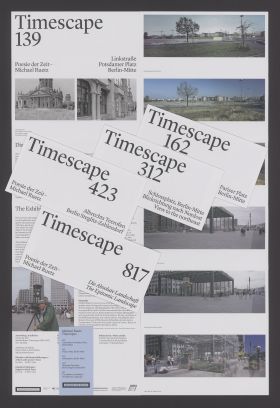
Michael Ruetz Timescapes Poetry of Time
Akademie der Künste, Berlin 2024
German/English, 45 ill.
5 photo booklets
ISBN 978-3-88331-258-3
Best.-Nr. 6049
€ 15
How can time and impermanence be rendered visible, and how can the upheavals and changes taking place in a society or an urban space be documented? Few other artists have concerned themselves with these questions to the extent that Michael Ruetz has. In the mid-1960s, he embarked on a large-scale photographic study to observe the transformation of natural and urban environments in Germany and Europe. Ruetz has recorded the metamorphoses in photographic series made up of images inventorying the changes and snapshots taken over decades. He calls them Timescapes.
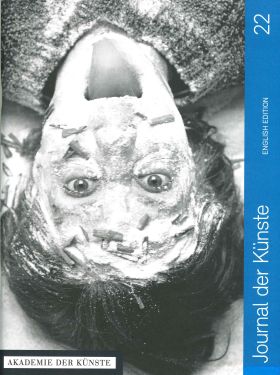
Journal der Künste 22
Published three times a year (German/English), available free of charge
ISSN (Print EN) 2627-2490
The Journal der Künste, issue 22, bids farewell to Jeanine Meerapfel and Kathrin Röggla, the Akademie’s former president and vice-president. It explores the possibility of utopias with Matěj Spurný, Eva von Redecker and Iris ter Schiphorst and the political shift to the right in Germany with Thomas Krüger, Christina Clemm and Holger Bergmann. The 2023 Kollwitz Prize recipient, Sandra Vásquez de la Horra, shows works from her oeuvre; and a Carte blanche designed by Wolfgang Tillmans is featured. The archive includes the stories behind a photomontage by István Szabó and newly acquired drawings by George Grosz, as well as insights into Jürgen Flimm’s director’s workshop.
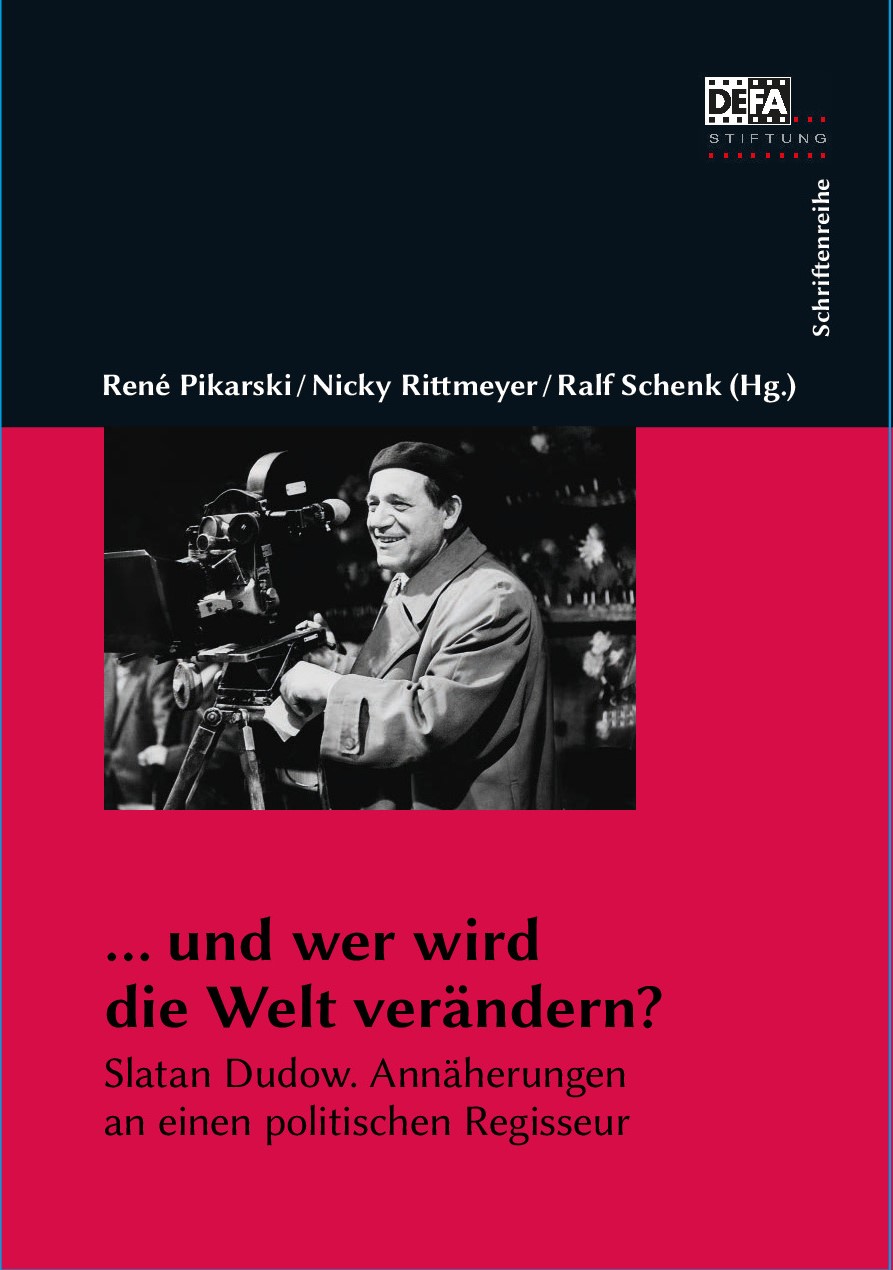
„…und wer wird die Welt verändern?“. Slatan Dudow. Annäherungen an einen politischen Regisseur
René Pikarski / Nicky Rittmeyer / Ralf Schenk im Auftrag der DEFA-Stiftung Berlin (in Kooperation mit der Akademie der Künste Berlin)
Bertz+Fischer, Berlin 2024
German, 688 pp.,
108 ill.
incl. 2 DVDs
ISBN 978-3-86505-425-8
Best.-Nr. 6051
€ 43
Slatan Dudow (1903–1963) is considered one of the pioneering left-wing representatives of Weimar Cinema and filmmaking in the GDR. Some of his works have entered the canon of German and international film history. Others shaped cinema’s orientation at the time. This comprehensive anthology compiles new research findings, reminiscences, and accounts from more than 30 authors. The extensive Slatan Dudow Archive at the Akademie der Künste was assessed for the first time for this publication.
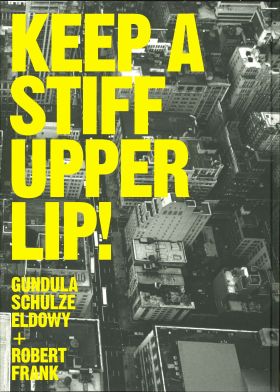
HALT DIE OHREN STEIF!
KEEP A STIFF UPPER LIP!
Gundula Schulze Eldowy + Robert Frank
Akademie der Künste, Berlin 2024
German/English, 240 pp.,
192 ill.
(Available in the bookshops of the Akademie der Künste and at buchladen@adk.de)
Best.-Nr. 6048
€ 28
This extensive catalogue documents the works of photo artist Gundula Schulze Eldowy, which were produced in New York between 1990 and 1993 and shown at the Akademie in early 2024. It focuses on her friendship with the legendary photographer and filmmaker Robert Frank. The publication includes documents from her East Berlin and New York periods, texts by Helke Misselwitz, Hans-Michael Koetzle and Sara Blaylock, and a conversation between the photographer and Boris Friedewald.
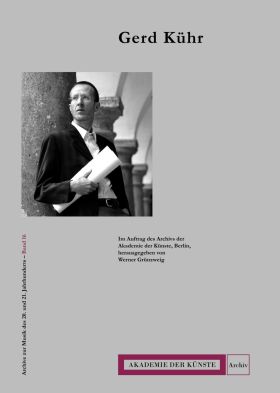
Archive zur Musik des 20. und 21. Jahrhunderts, Band 16 Gerd Kühr
Werner Grünzweig im Auftrag der Akademie der Künste, Berlin
von Bockel Verlag, Neumünster 2024
German, 176 pp.,
25 ill.
ISBN 978-3-95675-047-2
Best.-Nr. 3055
€ 29,80
Composer Gerd Kühr (b. 1952 in Carinthia, Austria) studied under Hans Werner Henze, among others. He experienced his breakthrough in 1988 with the opera Stallerhof, based on the play by Franz Xaver Kroetz. To this day, he has devoted himself primarily to music theatre. In addition to an extensive interview with Gerd Kühr and an inventory of the Gerd Kühr Archive at the Akademie der Künste, the publication contains important texts by the composer.
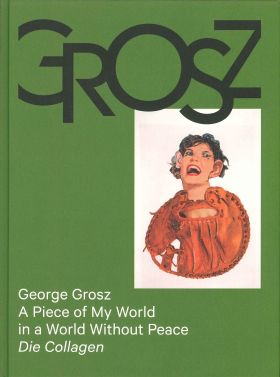
George Grosz: A Piece of My World in a World without Peace. Die Collagen
Birgit Möckel, Rosa von der Schulenburg
Verlag der Buchhandlung Walther und Franz König, Köln 2024
German, 172 pp.,
180 ill.
ISBN 978-3-7533-0531-8
Best.-Nr. 1215
€ 35
Collages made from photo materials taken from print media played a significant role in George Grosz’s works, especially during his early period in Berlin and his final years in the United States. Both female and male stereotypes and their counterparts recur, as do props from everyday life and the consumer world, aptly commenting on the society of their times. The catalogue includes all the works in the exhibition. The texts present the most recent findings on collage in Grosz’s oeuvre, drawing associations to comparable works by Erwin Blumenfeld, Herbert Fiedler and Hannah Höch.

Kolja Lessing
Ursula Mamlok
Composer between New York and Berlin
Hermann Simon
Hentrich & Hentrich, Berlin Leipzig 2024
German, 82 pp.,
19 ill.
ISBN 978-3-95565-636-2
Best.-Nr. 3054
€ 8,90
Even in her youth, Ursula Mamlok (1923–2016) had one single career goal: to become a composer – despite all the adversity of 1930s Berlin, which she left with her parents at the last minute in 1939. In New York, the struggle for her compositional identity began. After a successful career in the USA, the grande dame of contemporary music ventured a new beginning in Berlin in 2006 after her husband Dwight Mamlok passed away.
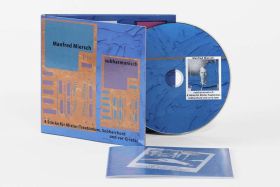
Manfred Miersch
subharmonisch
Arbeiten für Mixturtrautonium, Subharchord und var-Q-lator
Studio für Elektroakustische Musik der Akademie der Künste, Berlin in Kooperation mit Krautopia Records
Krautopia Records, Berlin 2023
German/English, 24 pp.,
6 ill.
ISBN 0745178444484
Best.-Nr. 31055
€ 14,99
With the invention of the trautonium around 1930 and its development into the mixed trautonium from 1948, as well as the invention of the sub-harp chord from 1960, electronic sounds were presented that are still very unusual today. The CD picks up on the approaches of that time and takes them into the future. An original sub-harchord, a reconstructed mixed trautonium after Oskar Sala and a completely new sub-harmonic instrument, the “var-Q-lator” developed and built by Hajo Wiechers.

Journal der Künste 21
Published three times a year (German/English), available free of charge
ISSN (Print EN) 2627-2490
The 21st issue with a new design focuses on questions of sustainability: with texts and photo series on “The Great Repair” by Anh-Linh Ngo, Zara Pfeifer and Mierle Laderman Ukeles, among others, and literary contributions by Ulrike Draesner and Cécile Wajsbrot. Also: conversations with Luc Tuymans and Gundula Schulze Eldowy, short essays by Anna Hetzer, Moshtari Hilal et. al. as well as news from the Archives.

ARCH+ 253: The Great Repair – Praktiken der Reparatur/A Catalog of Practices
ARCH+/Spector Books
German/English, 216 pp.,
339 ill.
ISBN 978-3-931435-80-6
Best.-Nr. 2080
available from ARCH+ Verlag
“The Great Repair” is an oxymoron. The title captures the convergence of two seemingly contradictory principles: the revolutionary ambition for systemic change and the evolutionary act of repair. Despite the justified (postmodern) skepticism toward revolution as a concept of rupture, we must not abandon our aspiration to bring about profound transformation.
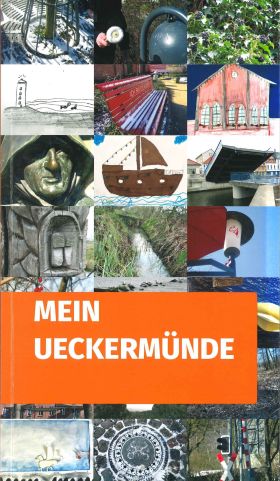
MEIN UECKERMÜNDE
Ein Stadtführer von 113 Kindern
Akademie der Künste, Berlin 2023
German, 76 pp.,
118 ill.
ISBN 978-3-88331-256-9
Best.-Nr. 1208
€ 6
113 children from the “Ehm Welk” Regional School in Ueckermünde explored their town for a week in March and recorded their discoveries in photos, pictures, films, sounds and animations, writing stories and drawing fictitious town maps. Artists supported the fifth graders. The result is an alternative city guide that goes beyond the classic book format to include acoustic and cinematic elements.
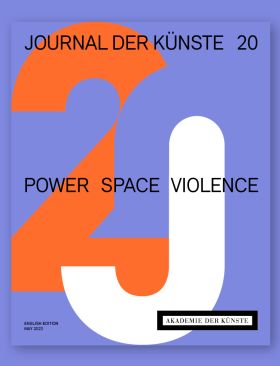
Journal der Künste 20
Published three times a year (German/English), available free of charge
ISSN (Print EN) 2627-2490
Accompanying the current exhibition, the 20th issue focuses on the context of power, space, and violence. Other topics include exile, artistic freedom, the broadcasting crisis, and the role of the arts in the revolutionary process in Iran. With contributions by and with Regina Stephan, Monica Bonvicini, Joanna Piotrowska, Eszter Salamon, Philipp Krüpe , Mina Keshavarz, Tanasgol Sabbagh, Matthias Lilienthal, Meron Mendel, Senthuran Varatharajah, Dominic Graf, Gerhart Baum, Sibylle Hoimann and Annett Gröschner, among others.
To order the printed version: info@adk.de
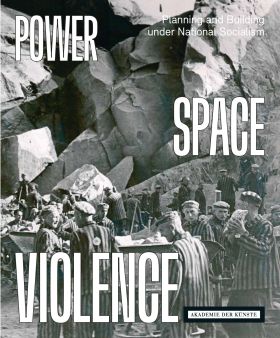
POWER SPACE VIOLENCE.
Planning and Building under National Socialism
Unabhängige Historikerkommission (UHK) in cooperation with the Akademie der Künste, Berlin
Akademie der Künste, Berlin 2023
English, 320 pp.,
420 ill.
ISBN 978-3-88331-255-2
Best.-Nr. 2079-E
out of print
Planning and building under the National Socialists pervaded all areas of life between 1933 and 1945 and were inseparably linked to the regime’s totalitarian practices – both in the German Reich and in the European territories it occupied. The members of the Independent Commission of Historians – Wolfgang Benz, Tilman Harlander, Elke Pahl-Weber, Wolfram Pyta, Adelheid von Saldern, Wolfgang Schäche and Regina Stephan – were tasked by what is now the Federal Ministry for Housing, Urban Development and Building with the research project “Planning and Building under the National Socialists: Prerequisities, Institutions, Impacts”. The research findings are presented in their essays, each of which draws on contemporary photographs and plans with accompanying commentary to amplify seven areas of focus: Housing and Settlements; Party and State Architecture; Camps in the National Socialist Era; Infrastructure and Spatial Planning; Internationality; Continuities in Urban Planning and Architecture in the East and West after 1945; The Building Legacies of National Socialism. Included in the book are biographies of fifty architects, landscape designers, construction specialists and civil servants.
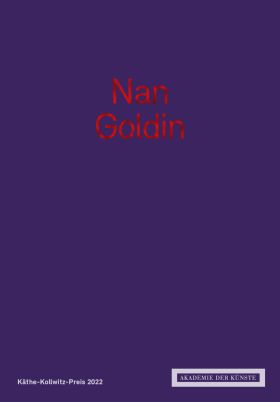
Nan Goldin. Käthe-Kollwitz-Preis 2022
Akademie der Künste, Berlin 2023
German/English, 56 pp.,
25 ill.
ISBN 978-3-88331-253-8
Best.-Nr. 9037
out of print
Nan Goldin has broken taboos and overcome boundaries with her works set in her personal environment and the LGBTQ* community. In doing so, she has campaigned for acceptance and increasing recognition of the LGBTQ* scene. The immediacy in her photographs stems from her physical and emotional belonging and detachment from a lifeworld that is closed to many people but has been opened up by Goldin. The catalogue marking the occasion of the artist winning the Käthe Kollwitz Prize contains colour and black-and-white images spanning five decades from Boston, New York, Paris, Berlin, and Asia, as well as a recent interview by her friend Thora Siemsen.

Kalender 2024: DDR-Plakate
Weingarten
Akademie der Künste, Berlin / Athesia Kalenderverlag GmbH, Unterhaching 2023
German, 14 pp.,
12 ill.
ISBN 978-3-8400-8494-2
Best.-Nr. 1210
out of print
Frosty noses are smiled away, the floor is cleaned with ease, clothes and special groceries are bought at Konsum and HO. Even Father Christmas is a regular customer, ho ho ho. Pure experiences, whether in the shower or on holiday. With this calendar, the year will never be boring.
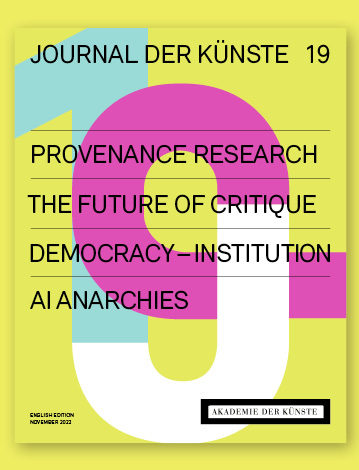
Journal der Künste 19
Published three times a year (German/English), available free of charge
ISSN (Print EN) 2627-2490
The new issue looks at the crisis of public broadcasting as an instrument of democracy, at how art deals with the societal challenges of artificial intelligence, and at the changing role of (art) criticism. Other focal points: the current archive exhibition “Spurensicherung,” photographs by Nan Goldin and Aleš Šteger on artistic freedom in Europe.
To order the print edition: info@adk.de
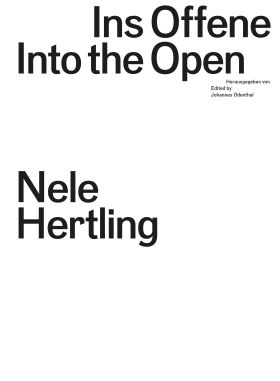
Into the Open. Nele Hertling – New Spaces for the Arts
Johannes Odenthal im Auftrag der Akademie der Künste
Akademie der Künste, Berlin / Spector Books, Leipzig 2022
German/English, 368 pp.,
200 ill.
ISBN 978-3-95905-557-4
Best.-Nr. 5055
€ 29
A tribute to Nele Hertling with artist dedications, essays and extensive interviews on her childhood under National Socialism, her socialisation between East and West Germany and at the Akademie der Künste. The volume documents a unique success story of international programming, the re-founding of the Hebbel-Theater, the invention of festivals and establishment of cultural-political networks: an untiring commitment to the arts over 60 years.

Hans Scharoun – Architektur auf Papier. Visionen aus vier Jahrzehnten (1909-1945)
Eva-Maria Barkhofen im Auftrag der Akademie der Künste, Berlin
Akademie der Künste, Berlin / Deutscher Kunstverlag GmbH, Berlin/München 2022
German, 324 pp.,
283 ill.
ISBN 978-3-422-98763-0
Best.-Nr. 2078
€ 52
Hans Scharoun is one of the most important German architects of the post-war period. This publication focuses on his free sketches and drawings that were not bound to concrete building projects and were created between 1909 and the end of the Second World War. Up to now, unevaluated sources support the classification of these visionary works, most of which are housed in the Architectural Archives of the Akademie der Künste.

Otto Nagel – Menschensucher und Sozialist
Eckhart J. Gillen im Auftrag der Stadt Eberswalde, in Zusammenarbeit mit der Akademie der Künste, Berlin
Akademie der Künste, Berlin / Stadt Eberswalde, Kulturamt, Eberswalde 2022
German, 116 pp.,
60 ill.
ISBN 978-3-88331-251-4
Best.-Nr. 1207
€ 10
The academic catalogue accompanies the exhibition of paintings and pastels by “Wedding classic” Otto Nagel from the art collection of the Akademie der Künste in the Regionalmuseum Eberswalde. Based on research, especially in the Akademie’s Visual Arts Archive, the authors discover astonishing new facets in the life and work of this outstanding 20th-century realist.
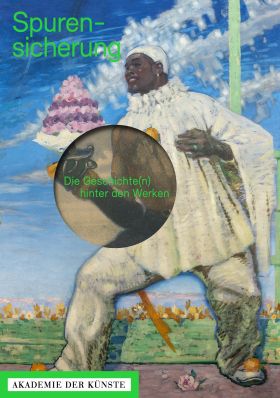
Provenance Research
Akademie der Künste, Berlin 2022
German, 100 pp.,
70 ill.
ISBN 978-3-88331-250-7
Best.-Nr. 1205
€ 9
What impact did the National Socialist dictatorship, the Second World War, and the division of Germany have on the history of ownership of cultural assets? These are the questions addressed by the Provenance Research exhibition. It identifies Nazi loot, illustrates the search and reacquisition of artworks from the Akademie collections that were lost during the Second World War, or the critical reappraisal of the GDR’s efforts to gain possession of valuable art objects.
English translation available as a free download:

»SCHREIBE MIR NUR IMMER VIEL.« Der Briefwechsel zwischen Hans und Lea Grundig. Ein Werkstattbericht
Im Auftrag der Akademie der Künste, Berlin, und der Rosa Luxemburg Stiftung herausgegeben von Kathleen Krenzlin
Akademie der Künste, Berlin / Deutscher Kunstverlag, Berlin/München 2022
German, 240 pp.,
141 ill.
ISBN 978-3-422-80060-1
Best.-Nr. 1206
€ 24
The letters between painter Hans Grundig (1901–1958) and graphic artist Lea Grundig (1906–1977) deal with a Jewish fate, art and love, but also with imprisonment and flight during the National Socialist era, and finally with the return to a destroyed Dresden. This volume of essays opens up the enormous dimension of the correspondence and forms the prelude to the planned edition of the private correspondence currently in progress.
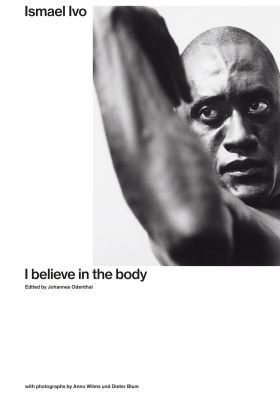
Ismael Ivo. I Believe in the Body
Johannes Odenthal
Spector Books OHG, Leipzig 2022
English, 288 pp.,
372 ill.
ISBN 978-3-95905-624-3
Best.-Nr. 5054-E
€ 32
Born in 1955 in a poor district of São Paulo, Ismael Ivo became one of the world’s most famous and successful dancers. Artistically, he forged close connections with Johann Kresnik, Marcia Haydée, Ushio Amagatsu, George Tabori, Koffi Kôkô and many others. I Believe in the Body brings together interviews from different periods of his creative career, the recollections of those who were with him in Brazil and Europe, visual essays by Anno Wilms and Dieter Blum, and a comprehensive catalogue raisonné. The book is the first publication to portray the life and work of this exceptional artist and person.

Norbert Stück
Das Triadische Ballett (Triadic Ballet) Schlemmer / Bohner / Hespos
Norbert Stück
Selbstverlag, Berlin 2022
German, 68 pp.,
91 ill.
Best.-Nr. 5053
€ 9
In 1977, solo dancer and choreographer Gerhard Bohner (1936–1992) reconstructed all the costumes of Oskar Schlemmerʼs legendary Triadic Ballet for the stage down to the last detail. The picture catalogue lines up the historical images with the new version to tell the triadic costume story.
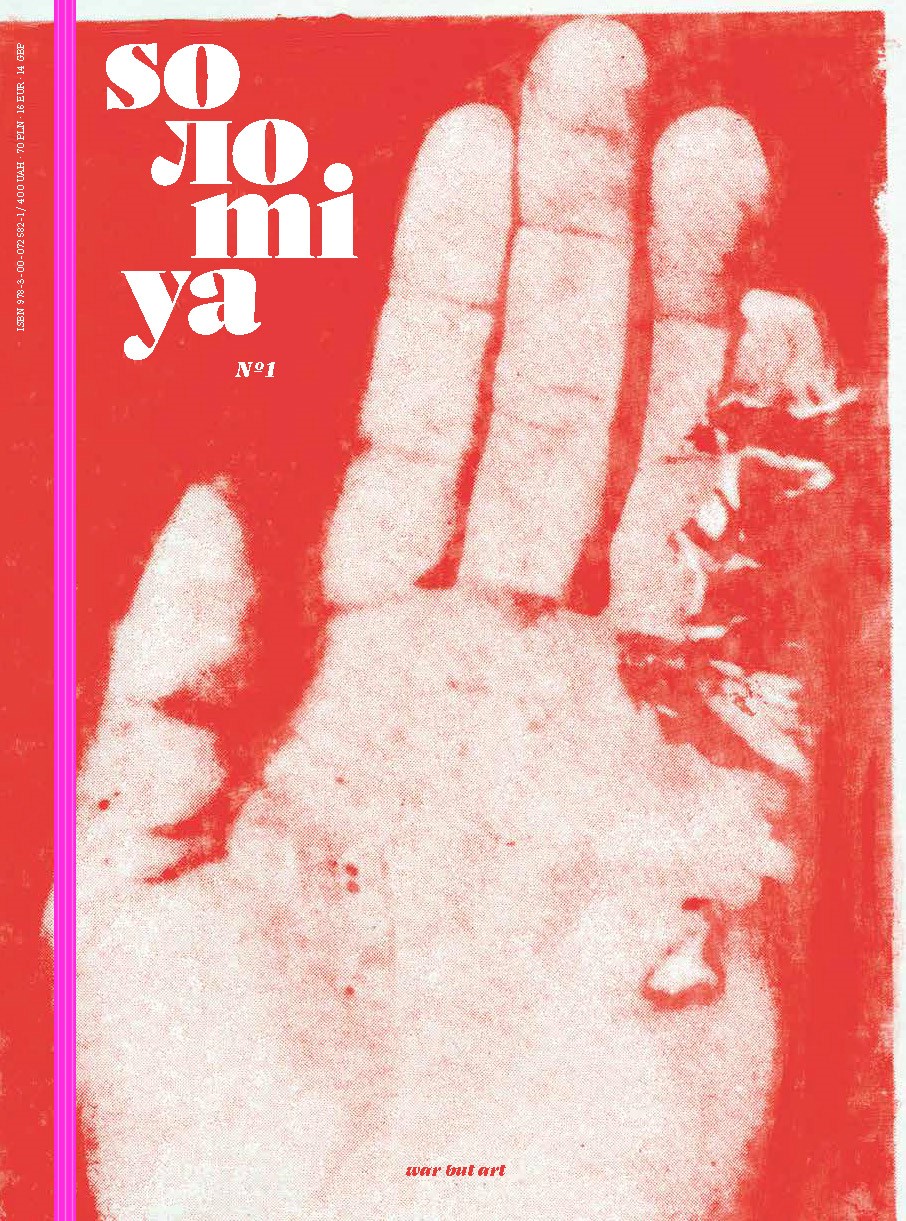
soлomiya № 1
Vsevolod Kazarin, Andrii Ushytskyi, Sebastian Wells
Self-published / In cooperation with Akademie der Künste, Berlin, and OSTKREUZ – Agentur der Fotografen, Juni 2022
English, 128 pp.,
98 ill.
ISBN 978-3-00-072582-1
Best.-Nr. 6046
out of print
In April 2022, artists from Kyiv and Berlin founded soлomiya in response to Russia’s war against Ukraine. With long photo spreads and reports from everyday wartime life, the magazine aims to promote the visibility of shared democratic values. Being a platform of self-expression for the young generation of creatives from Ukraine, soлomiya is both an itinerant group exhibition and an art object in itself.
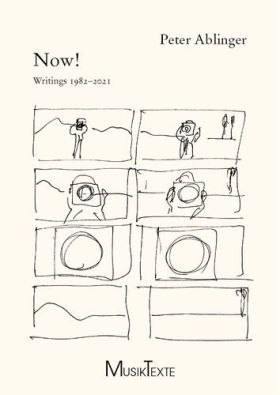
Peter Ablinger, Now! Writings 1982–2021
Übers. ins Englische von Meaghan Burke, Akademie der Künste, Berlin, in Zusammenarbeit mit dem Verlag MusikTexte, Köln 2022
English, 320 pp.,
ca. 80 ill.
ISBN 987-3-9813319-8-1
Best.-Nr. 3053
€ 29
“The sounds are not the sounds! They are there to distract the intellect and soothe the senses.” Born in Austria in 1959, Peter Ablinger, who has lived in Berlin since 1982 and is a member of the Akademie der Künste, is not only considered to be an innovative composer but also a brilliant essayist. His writings were published in German in 2016 and are now available in English translation.

Kalender 2023: DDR-Plakate
Weingarten
Akademie der Künste, Berlin / Athesia Kalenderverlag GmbH, Unterhaching 2022
German, 14 pp.,
13 ill.
ISBN 978-3-8400-8358-7
Best.-Nr. 1203
out of print
The best GDR design of the 1950s from the Akademie’s own poster collection will take you through a cheerful 2023. Twelve motifs offer a variety of insights into a colourful advertising world: Under the motto “snug and cosy warmth”, people cuddle up in Konsum clothing to combat everyday worries, Wellaform puts a gloss on hair and a laughing sausage ensures a “Bon appétit!”

Journal der Künste 18
Published three times a year (German/English), available free of charge
ISSN (Print EN) 2627-2490
Pictures from Ukraine by Mila Teshaieva and Johanna-Maria Fritz open issue 18. The focus of the issue is the global ecological crisis: with contributions on the Japanese Edo period as a model for an art of sustainability, on the problematic role of copper, on dealing with climate protection issues through musical interventions, and more. It also includes a travel diary by Jeanine Meerapfel on the trail of Walter Benjamin, an interview with Berlin Biennale curator Kader Attia, drawings by Milein Cosman and a look at the newly opened Gerhard Leo Archive.
To order the print edition: info@adk.de

Poetik der Mitte. Walter Kempowski im literatur- und ideengeschichtlichen Kontext
Tom Kindt, Marcel Lepper und Kai Sina
Wallstein Verlag, Göttingen 2022
German, 232 pp.,
16 ill.
ISBN 978-3-8353-3846-3
Best.-Nr. 4040
€ 26,90
The monumental text collages of Walter Kempowski seek the political and aesthetic middle ground. In them, he brings together narrative tradition and avant-garde. The contributors investigate the literary and historical constellations of the great prose writer. The volume was produced in cooperation with the Akademie der Künste, which preserves the extensive Kempowski archive.
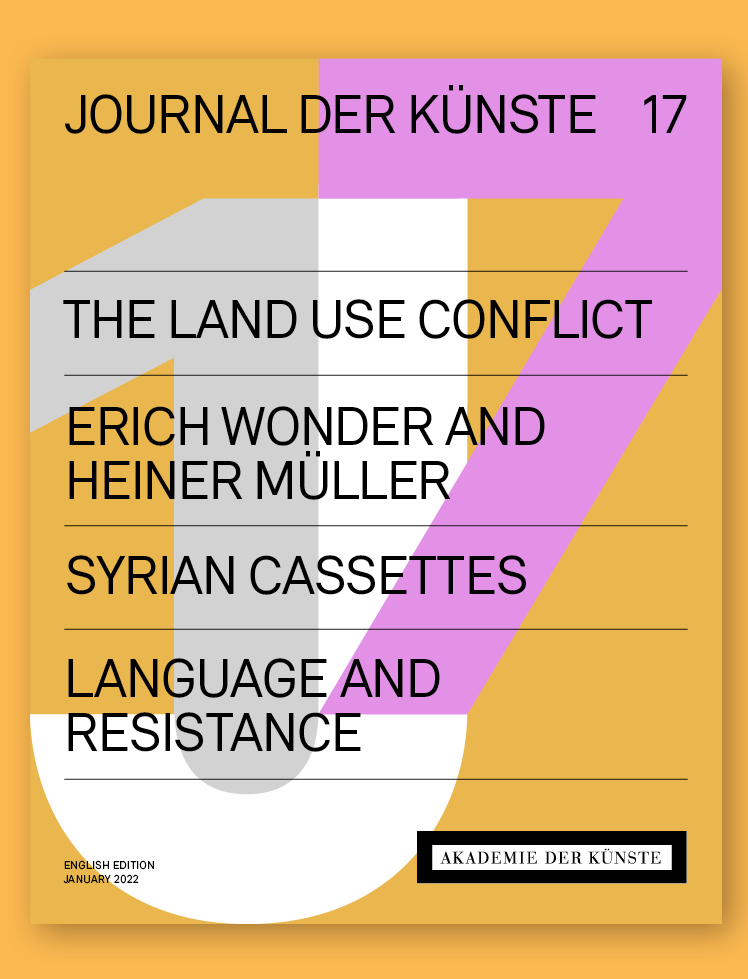
Journal der Künste 17
Published three times a year (German/English), available free of charge ISSN (Print EN) 2627-2490
In addition to an essay by Wilfried Wang on the question of land use, Stephan Suschke’s presentation of the new exhibition on Erich Wonder’s stage designs for Heiner Müller and poems by Meena Kandasamy, dialogues are at the centre of the 17th issue: Kathrin Röggla talks to writer Mohamed Mbougar Sarr about language and resistance, a roundtable discusses the legacy of Paul and Eslanda Robeson, Mark Gergis talks about cassette kiosks in Damascus and his collection of Syrian music in an interview. The focus is also on the opening of the Roger Willemsen Archive and a photo series by Ute Mahler and Werner Mahler. The Carte Blanche goes to JUNGE AKADEMIE fellow and visual artist Sasha Kurmaz.
To order the print edition: info@adk.de
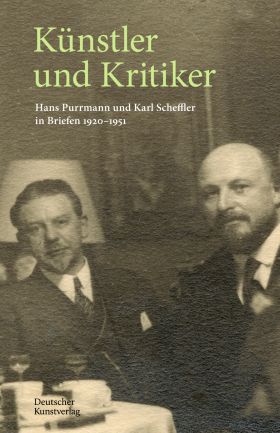
Künstler und Kritiker. Hans Purrmann und Karl Scheffler in Briefen 1920–1951
Felix Billeter, Julie Kennedy,
Anke Matelowski
Deutscher Kunstverlag, Berlin
und München 2021
German, 224 pp., 50 ill.
ISBN 978-3-422-98428-8
Best.-Nr. 4039
€ 18
The correspondence between artist Hans Purrmann (1880–1966) and the editor of the magazine Kunst und Künstler Karl Scheffler (1869–1951) offers the reader a unique insight into the debates between an artist and his critic from the 1920s up to the early post-war era. The two men’s understanding of trends in art formed the basis of their friendship and questions on art.
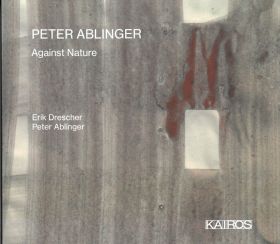
Peter Ablinger. Against Nature
Stutio für Elektroakustische Musik, Akademie der Künste
Akademie der Künste, Berlin / Kairos Music + Zeitvertrieb Wien Berlin 2021
German/English, 27 pp.,
8 ill.
Best.-Nr. 31054
€ 16,99
„Against Nature“ Instruments used: Voice (spoken, sung), glissando flute (approx. b–c#4), “ultrasonic flute” (organ pipes, c4–f6), bottles (c–f#1), bird pipes, and only rarely used: bass flute, piccolo, small wooden flute
72:43 min.
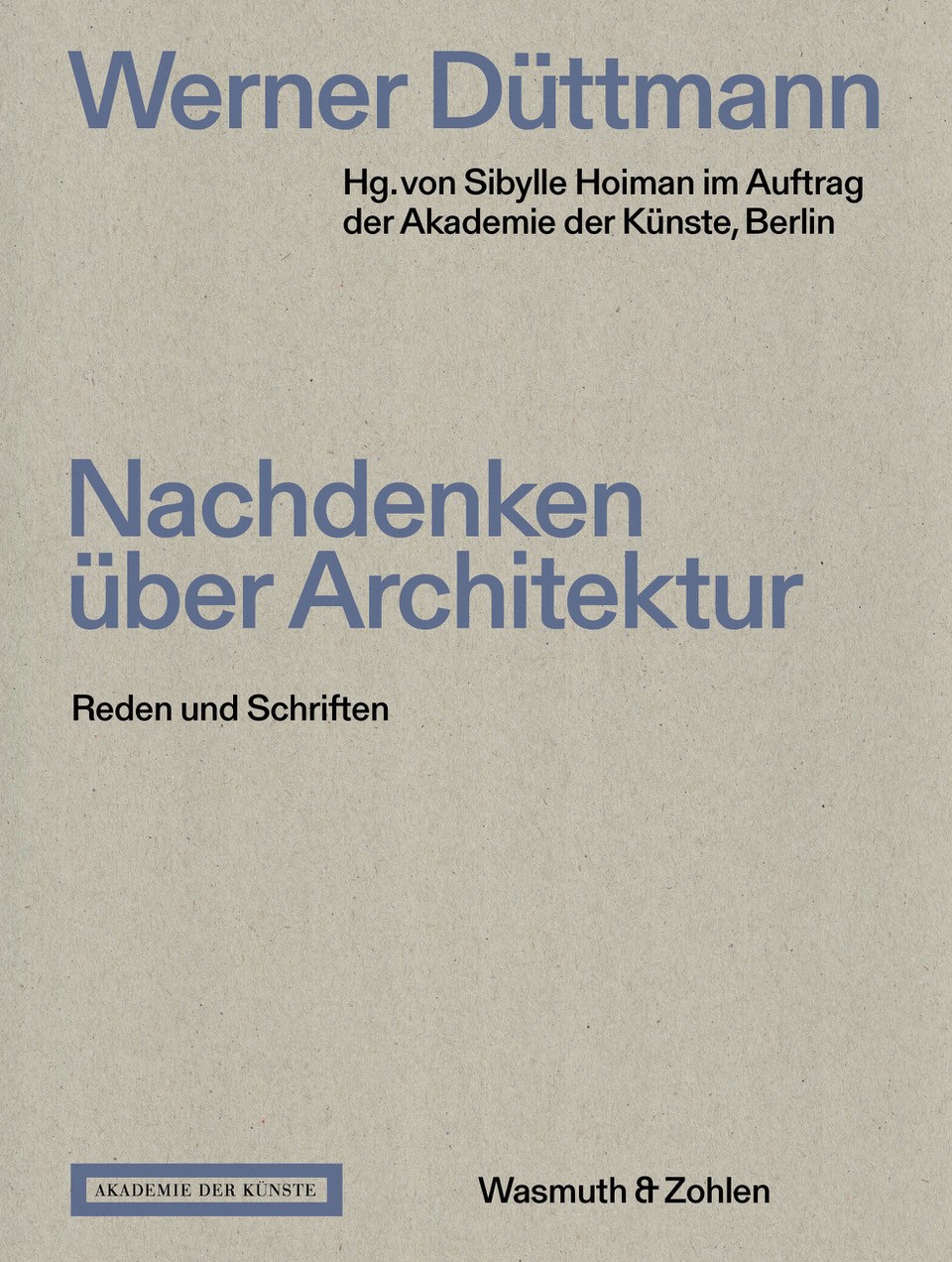
Werner Düttmann
Nachdenken über Architektur
Reden und Schriften
Sibylle Hoiman im Auftrag der Akademie der Künste, Berlin
Wasmuth & Zohlen, Berlin 2021
German, 304 pp.,
70 ill.
ISBN 978-3-8030-2226-4
Best.-Nr. 2076
€ 24,80
On the occasion of Werner Düttmann’s 100th birthday, the Akademie der Künste is publishing his speeches and writings, which are held in its archives. The architect, urban planner and Academy President was a humorous and astute observer, reflective and visionary: his texts read like highly topical, relevant contributions to the architectural and urban planning debates that continue to this day.

Journal der Künste 16
Published three times a year (German/English), available free of charge ISSN (Print EN) 2627-2490
Contributions by Aleida Assmann and Max Czollek on memory, art and archives continue the “work on memory” in issue 16. The themes of the European Alliance of Academies founded by Jeanine Meerapfel - freedom of art and transnational solidarity against the Europe-wide shift to the right – resonate, among others, in an essay by Radka Denemarková and a photo series by Matei Bejenaru. “Emptiness / White / Silence” are the keywords in the issue’s focus on the exhibition “Nothing to see ness”. Also: Joseph Beuys in a photo series by Michael Ruetz, Bernhard Maaz on the correspondence between Karl Scheffler and Hans Purrmann, the Carte Blanche for Arila Siegert, and much more.
To order the print edition: info@adk.de
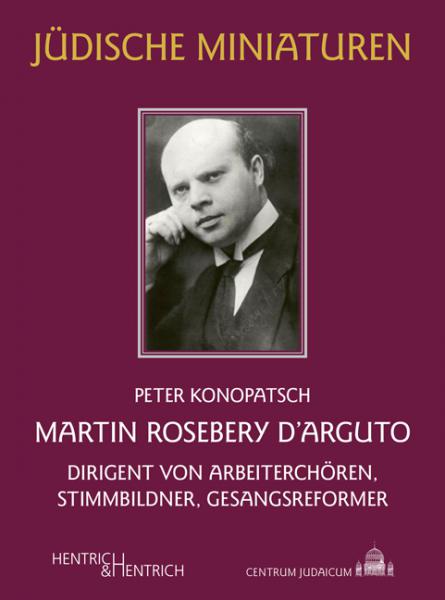
Peter Konopatsch
Martin Rosebery d’Arguto
Dirigent von Arbeiterchören. Stimmbildner. Gesangsreformer
Hermann Simon
Hentrich & Hentrich, Leipzig 2021
German, 80 pp.,
10 ill.
ISBN 978-3-95565-459-7
Best.-Nr. 3052
€ 8,90
Vocal coach, conductor and composer Martin Rosebery d’Arguto (1890–1942) lead a significant workers’ choir to musical excellence in Berlin in the 1920s und received great recognition for his work. In 1939, he was imprisoned at the Sachsenhausen concentration camp, where he organised a secret choir for the Jewish prisoners. All trace of him was lost in October 1942 between Dachau und Auschwitz.
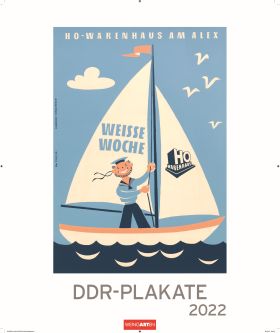
Kalender 2022: DDR-Plakate
Weingarten
Akademie der Künste, Berlin / Athesia Kalenderverlag GmbH, Unterhaching 2021
German, 14 pp.,
13 ill.
ISBN 978-3-8400-8136-1
Best.-Nr. 1199
out of print
From workers’ sports to a visit to the zoo – GDR poster art of the 1950s is entertaining, funny and varied. For the cult GDR poster calendar 2022, twelve colourful motifs have again been selected from over 50,000 posters held in the Akademie’s own collection. They tell of everyday life in the GDR from a plate of sausages and sun cream to needlework and sporting bets.

Andrej Tarkowski. Stalker Film und Ausnahmezustand
Cornelia Klauß, Claus Löser, Jule Reuter im Auftrag der Akademie der Künste, Berlin
Akademie der Künste, Berlin 2021
German, 104 pp.,
75 ill.
ISBN 978-3-88331-243-9
Best.-Nr. 6045
out of print
Forty years after the release of the film Stalker, a symposium exclusively dedicated to this masterpiece by Andrei Tarkovsky took place at the Akademie der Künste in 2019. Its dystopian and disturbing nature continues to preoccupy many filmmakers and artists today. The contributions, published both in print and online on the Akademie der Künste website, cover topics such as the film’s production history, the ambiguous garden and landscape theme, references to science fiction, its reception in the East and West, and the video game version of it.
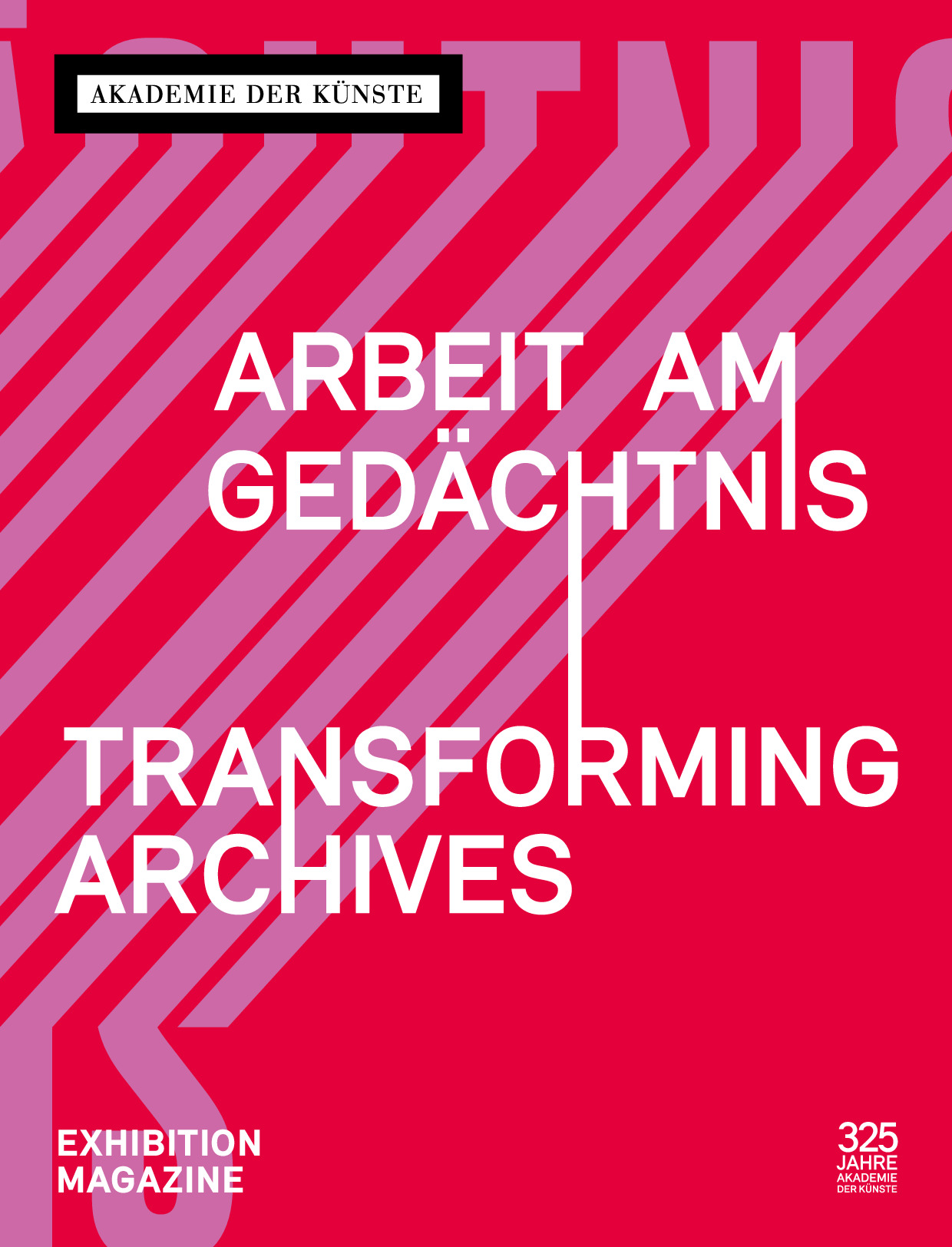
Arbeit am Gedächtnis – Transforming Archives
Akademie der Künste, Berlin 2021
English, 110 pp., 70 ill.
ISBN 978-3-88331-246-0
out of print
The “Arbeit am Gedächtnis – Transforming Archives” exhibition magazine can be ordered at buchladen@adk.de (plus shipping). It contains texts and pictures of the participating artists, detailed background material on the archive exhibits and articles on memory work and memory culture by Aleida Assmann, Christina Baldacci, Sharon Macdonald, Doreen Mende, Nora Sternfeld and others.
A digital review of talks, readings, concerts and other events can be found on the website at: www.adk.de/de/projekte/2021/gedaechtnis/

Montage oder Fake News? Von Heartfield bis Twitter
Angela Lammert on behalf of the Akademie der Künste
Akademie der Künste, Berlin / Steidl, Göttingen 2021
German, 264 pp., 164 ill.
ISBN 978-3-88331-242-2
Order number 1197
€ 30
This volume was produced in 2020 on the occasion of the “John Heartfield. Photography plus Dynamite” exhibition and addresses the changing mechanisms of action and circulation of montage image practices from historical photomontage to fake news. The theoretical and artistic contributions primarily revolve around the question of the “truths” of images today and the possibilities of their critical (de)construction.

Journal der Künste 15
Published three times a year (German/English), available free of charge
ISSN (Print EN) 2627-2490
Photo series by Sebastian Wells and Maurice Weiss, contributions by Jeanine Meerapfel, Kathrin Röggla and criminologist Christine Hentschel, a conversation with Andres Veiel and workshop reports from an accommodation for refugees look at the topicality of “Pandemic and Society”. For this year‘s Akademie programme focus “Arbeit am Gedächtnis – Transforming Archives”, the Carte Blanche goes to Candice Breitz and reflections by Siegfried Zielinski, Matthias Sauerbruch, music performer Raed Yassin and artists Jim Chuchu and Njoki Ngumi follow. The Archives explore literary connections between Budapest and Berlin, remember Werner Düttmann and launch “Heinrich Mann DIGITAL”.
To order the print edition: info@adk.de
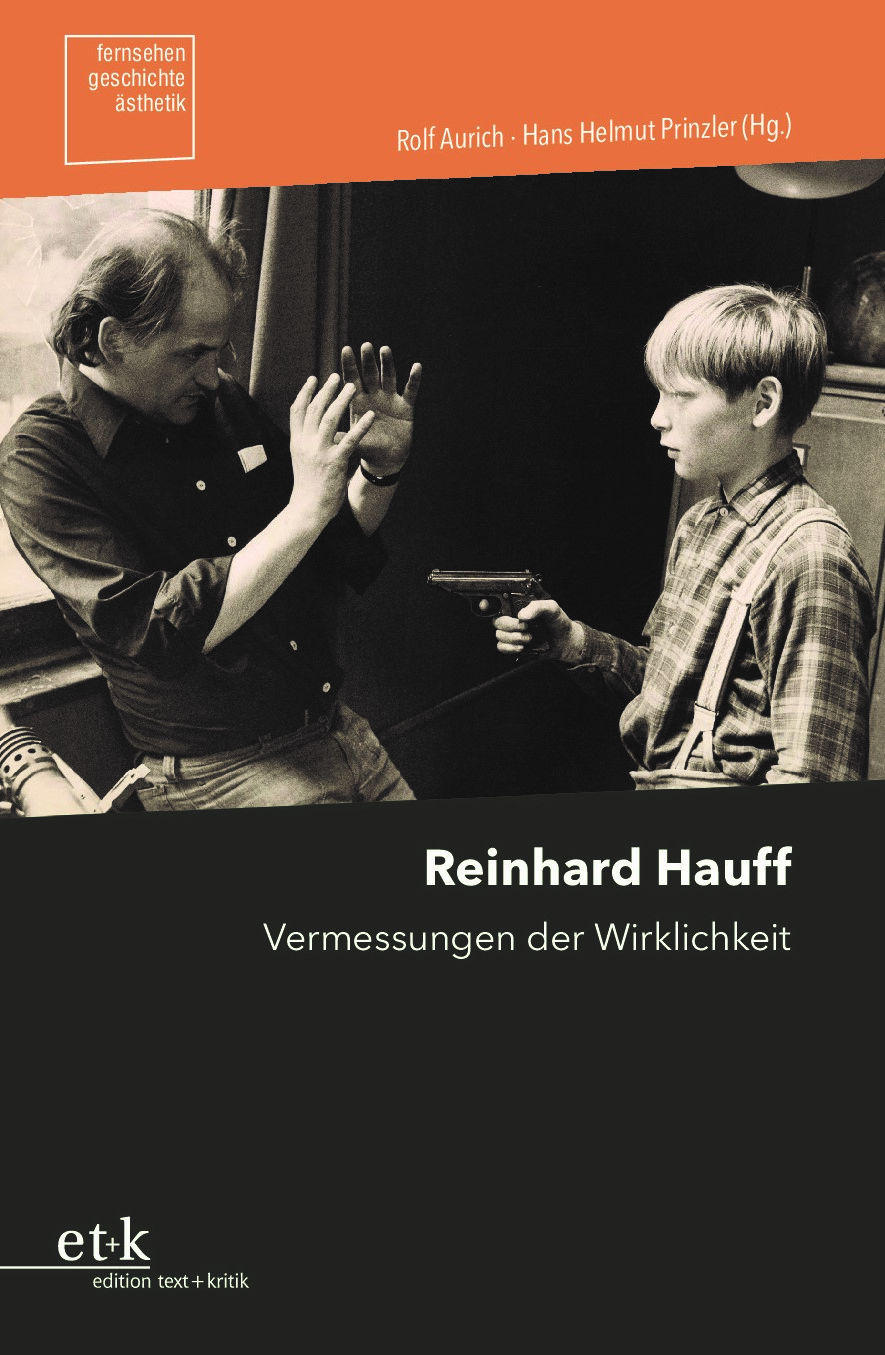
Reinhard Hauff. Vermessungen der Wirklichkeit
Rolf Aurich, Hans Helmut Prinzler on behalf of the Akademie der Künste and Deutsche Kinemathek (eds.)
Reihe „Fernsehen. Geschichte. Ästhetik“, Bd. 5, edition text + kritik, München 2021
German, 204 pp.,
100 ill.
ISBN 978-3-96707-413-0
Best.-Nr. 6047
€ 29
Reinhard Hauff turned to social reality after his start in television entertainment with documentary works and films such as Die Verrohung des Franz Blum (1974). His greatest successes came with the courtroom drama Stammheim (1986) and the musical Linie 1 (1988). This first monograph on Hauff is published as the fifth volume in the series “Fernsehen. Geschichte. Ästhetik.”. An extensive biographical interview is supplemented by essays by Egon Netenjakob and Rolf Aurich as well as an interview with cameraman Wolfgang-Peter Hassenstein.
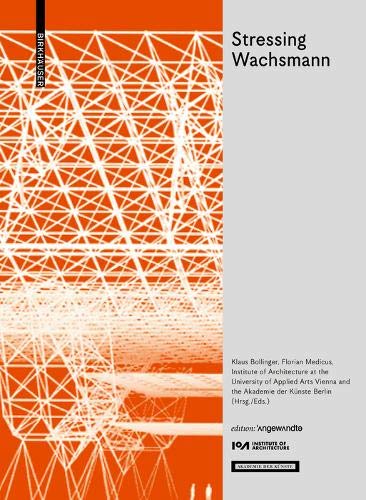
Stressing Wachsmann
Strukturen für eine Zukunft
Structures for a Future
Klaus Bollinger, Florian Medicus, Institute of Architecture at the University of Applied Arts Vienna, Akademie der Künste, Berlin
Birkhäuser Verlag GmbH, Basel 2020
German/English, 384 pp.,
222 ill.
Best.-Nr. 2073
€ 38,95
Architekturdebatte.Stressing Wachsmann attempts to finally give Konrad Wachsmann’s contribution to architectural history the appreciation it deserves. It compares the intellectual and material conditions and circumstances of building then and now, and provides what is both a critical and lively contribution to current architectural debate.
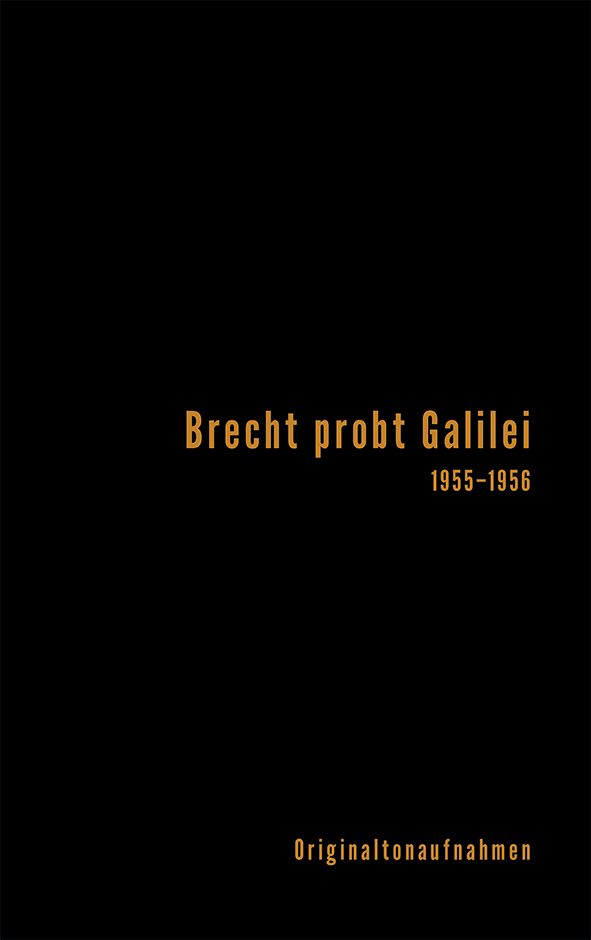
Brecht probt Galilei. 1955/56
Dokumentation und Feature / 3 CDs im Buch mit Leineneinband, 150 Minuten, Regie: Stephan Suschke, speak low, Berlin 2020 ISBN 978-3-940018-96-0 € 24
Brecht’s last rehearsal work Life of Galileo with Ernst Busch was recorded by Hans Bunge. The audio book presents two of a good one hundred hours, selected and commented on by Stephan Suschke, as well as a feature by Joachim Werner and Stephan Suschke that emphasises the rhythmic-sounding appeal of the work. You can listen to live theatre work on a highly topical play.
The edition is published in cooperation with
Federal Agency for Civic Education
Tue, 23 Feb, 7 pm | Audio Book Presentation
>> Brecht rehearses Galilei 1955/56
Audio sample: www.speaklow.de
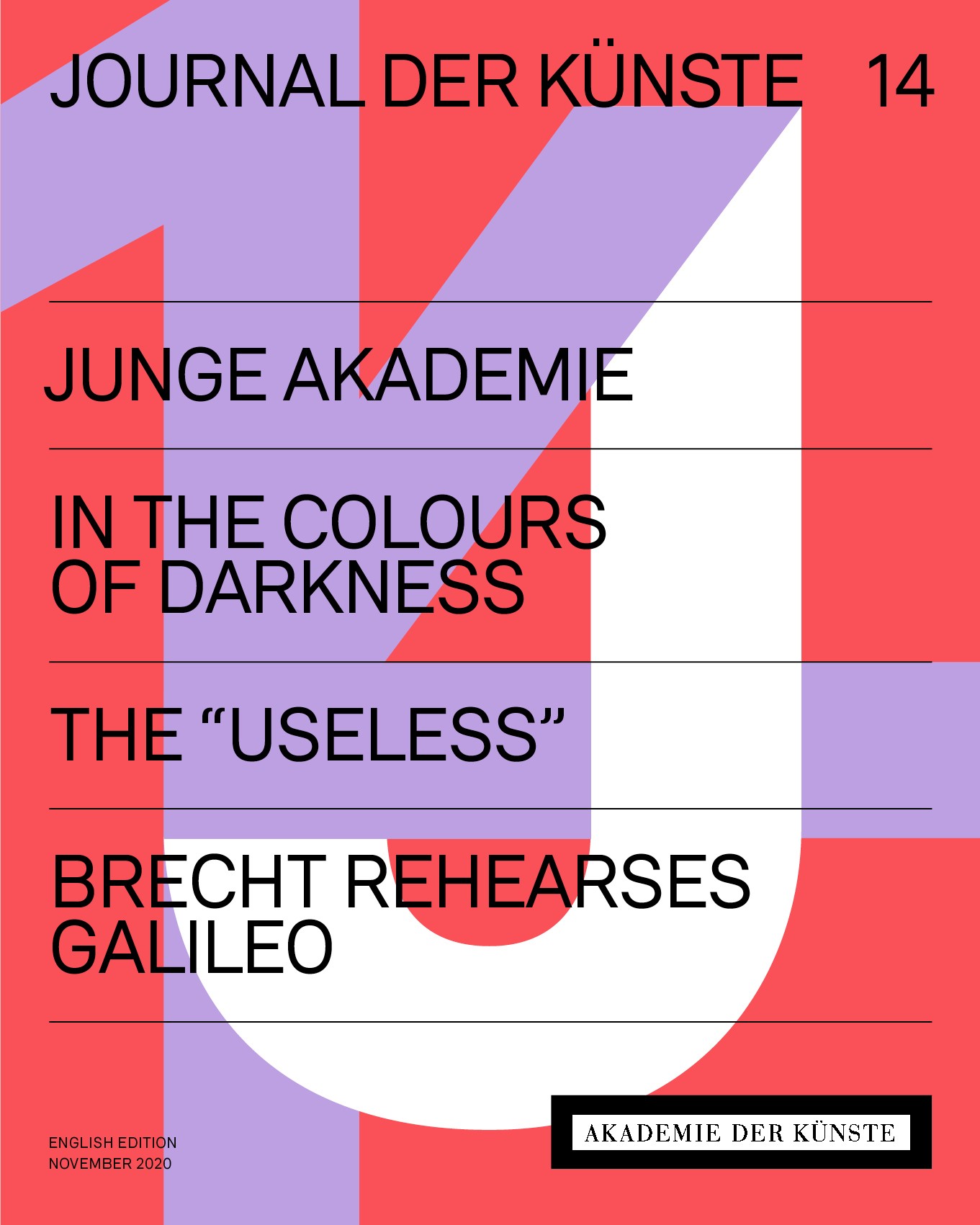
Journal der Künste 14
Published three times a year (German/English) available free of charge ISSN (Print EN) 2627-2490
The Journal der Künste 14 focusing on the JUNGE AKADEMIE; the carte blanche for Péter Nádas; Mark Lammert on the consequences of the coronavirus; Hubertus von Amelunxen in conversation with Ellen Auerbach Prize winner Ferhat Bouda; Annesley Black, Kerstin Hensel, Elena Zieser and Gesine Bey on ON MY WAY – STORIES FROM EUROPE; Rainer Esser (Die Zeit) in conversation with OSTKREUZ – Agentur der Fotografen on the CONTINENT exhibition. From the archive: theatre director Stephan Suschke on Brecht probt Galilei; and much more.
To order the print edition: info@adk.de
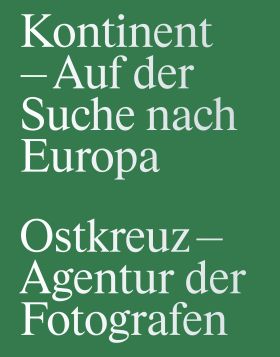
CONTINENT – In Search of Europe
Ingo Taubhorn und OSTKREUZ – Agentur der Fotografen, in Zusammenarbeit mit der Akademie der Künste, Berlin
Hartmann Books, Stuttgart 2020
German/English, 436 pp.,
300 ill.
ISBN 978-3-96070-054-8
Best.-Nr. 6044
€ 39,90
With the title CONTINENT – In Search of Europe, the publication of the same name will be published to accompany the exhibition. As an artistic and political statement, OSTKREUZ – Agentur für Fotografen focuses on presentday Europe and critically examines it in 22 positions. On the occasion of the collective’s thirtieth anniversary, the book invites readers to reflect on Europe in a dynamic and complex way through a variety of perspectives.
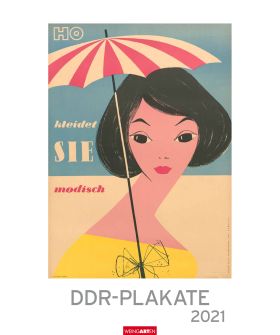
Calendar 2021: GDR Posters
Akademie der Künste, Berlin / KV&H Verlag Weingarten, Unterhaching 2020
German, 14 pp., 13 ill.
ISBN 978-3-8400-8007-4
Order no. 1196
out of print
Corn is sausage on a stick! The poster art of the GDR combines snappy slogans with impressive graphic design and a pinch of politics. Twelve original motifs from the 1950s and 1960s from the Akademie der Künste poster collection will accompany you through 2021, promoting wholefood nutrition, compensatory gymnastics, road safety and shopping at HO or Konsum.
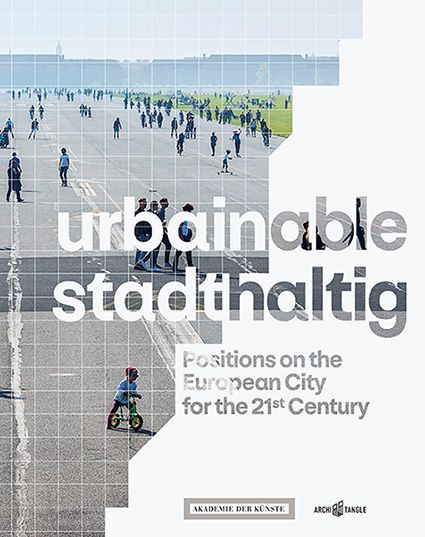
urbainable – stadhaltig.
Positions on the European City for the 21st Century
Tim Rieniets, Matthias Sauerbruch,
Jörn Walter
Akademie der Künste, Berlin / ArchiTangle GmbH, Berlin 2020
English, 224 pp., 300 ill.
ISBN 978-3-88331-241-5
Order no. 2075
€ 38
The European city has been an engine of civilisation since its creation. Today, however, fundamental challenges such as climate change mean it is facing changes that cast doubt on the continuity and sustainability of the ethical foundations of urban life. On the basis of projects, visions and manifestos, the members of the Architecture Section and their guests from all over Europe present their positions for a new direction.
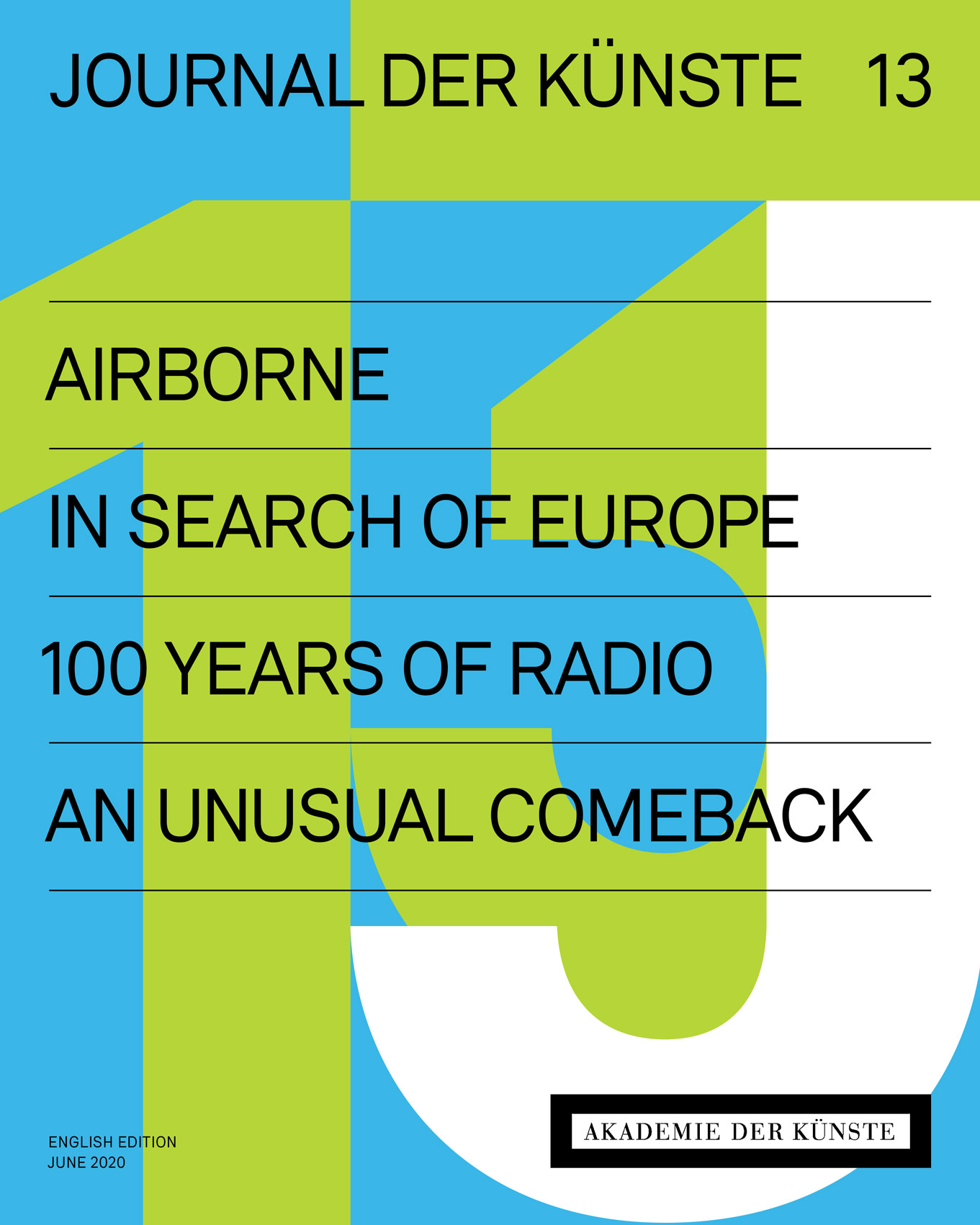
Journal der Künste 13
Published three times a year (German/English) available free of charge ISSN (Print EN) 2627-2490
The Journal der Künste 13 with the following contributions: Wolfgang Kaleck, Eva Horn, A. L. Kennedy, Kathrin Röggla, Anh-Linh Ngo, Adrienne Goehler on criticism and crisis in the time of the pandemic. Oliver Sturm, Paul Plamper and Jochen Meißner with contributions on the 100th anniversary of radio and contemporary radio drama. Photographer Johanna-Maria Fritz in an interview about her work on magic and witches in Romania’s Roma community in the context of the exhibition “Continent – Searching for Europe” (02/10/20 – 10/01/2021). Iranian filmmaker Farhad Delaram on the Iranian film scene, censorship and his own way of approaching and handling it. News from the Archives brings contributions about Max Eitingon and Arnold Zweig, the story of an extraordinary comeback and much more.
To order the print edition: info@adk.de
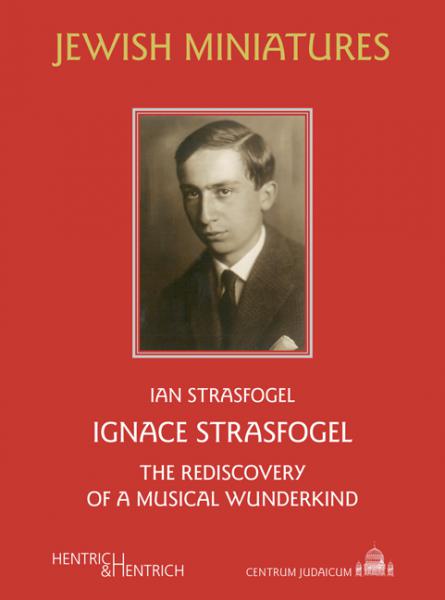
Ian Strasfogel
Ignace Strasfogel
The Rediscovery of a Musical Wunderkind
Hermann Simon
Hentrich & Hentrich, Leipzig 2020
English, 84 pp.,
16 ill.
ISBN 978-3-95565-415-3
€ 8,90
Born in Warsaw in 1909, Ignace Strasfogel was the youngest student ever admitted to the Berlin Hochschule (conservatory), a true wunderkind. A teenaged pupil in Franz Schreker’s famed composition class, his second piano sonata won the Mendelssohn Prize in 1926. He accompanied Joseph Szigeti on a six-month world tour in 1927, made recordings with Carl Flesch, wrote stage music for Max Reinhardt productions, and served as Leo Blech’s assistant at the Staatsoper Unter den Linden in Berlin. Summarily dismissed from the opera in 1933, Strasfogel fled to America and reestablished himself. He was appointed official pianist of the New York Philharmonic by Arturo Toscanini and eventually came to prominence as a coach and conductor at the Metropolitan Opera. Late in his life, Strasfogel started composing again. Young German musicians took note and began championing his music, which soon attracted an admiring public. The warmth and sympathy with which he and his music was received in Germany gradually led him to make peace with the country that had ripped his life apart.
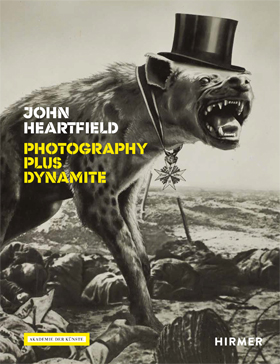
John Heartfield. Photography plus Dynamite
Angela Lammert, Rosa von der Schulenburg and Anna Schultz on behalf of the Akademie der Künste, Berlin (Eds.), Akademie der Künste, Berlin / Hirmer Verlag 2020 312 pages, 250 illustrations ISBN 978-3-7774-3443-8 (English edition) € 39,90
The political photomontages and collaged book covers of John Heartfield (1891–1968) have their origins in Berlin Dada. With gripping imagery and trenchant humour, the artist fought against war and Fascism, using works whose explosive power has lost none of its impact today. Like his animated films and theatre work, they are discussed in the context of his own and others' artworks, as well as the archive materials and images he collected. Supplemented by contemporary artists' statements.

John Heartfield. Das Berliner Adressbuch 1950–1968
Christine Fischer-Defoy and Michael Krejsa on behalf of the Akademie der Künste, Berlin (Eds.), Akademie der Künste, Berlin / Quintus-Verlag 2020
200 pages, 91 illustrations
ISBN 978-3947215-75-1 (German edition)
€ 18
John Heartfield – photomonteur, graphic artist and set designer – used this Berlin address book after he returned from exile in London and settled in the GDR. It is now kept in the archives of the Akademie der Künste. Many entries are accompanied by previously unpublished correspondence and photographs, offering profound commentary. Excerpts from the address book, pertaining to about 120 addressees, are enriched with biographical notes, anecdotes and quotes from letters.
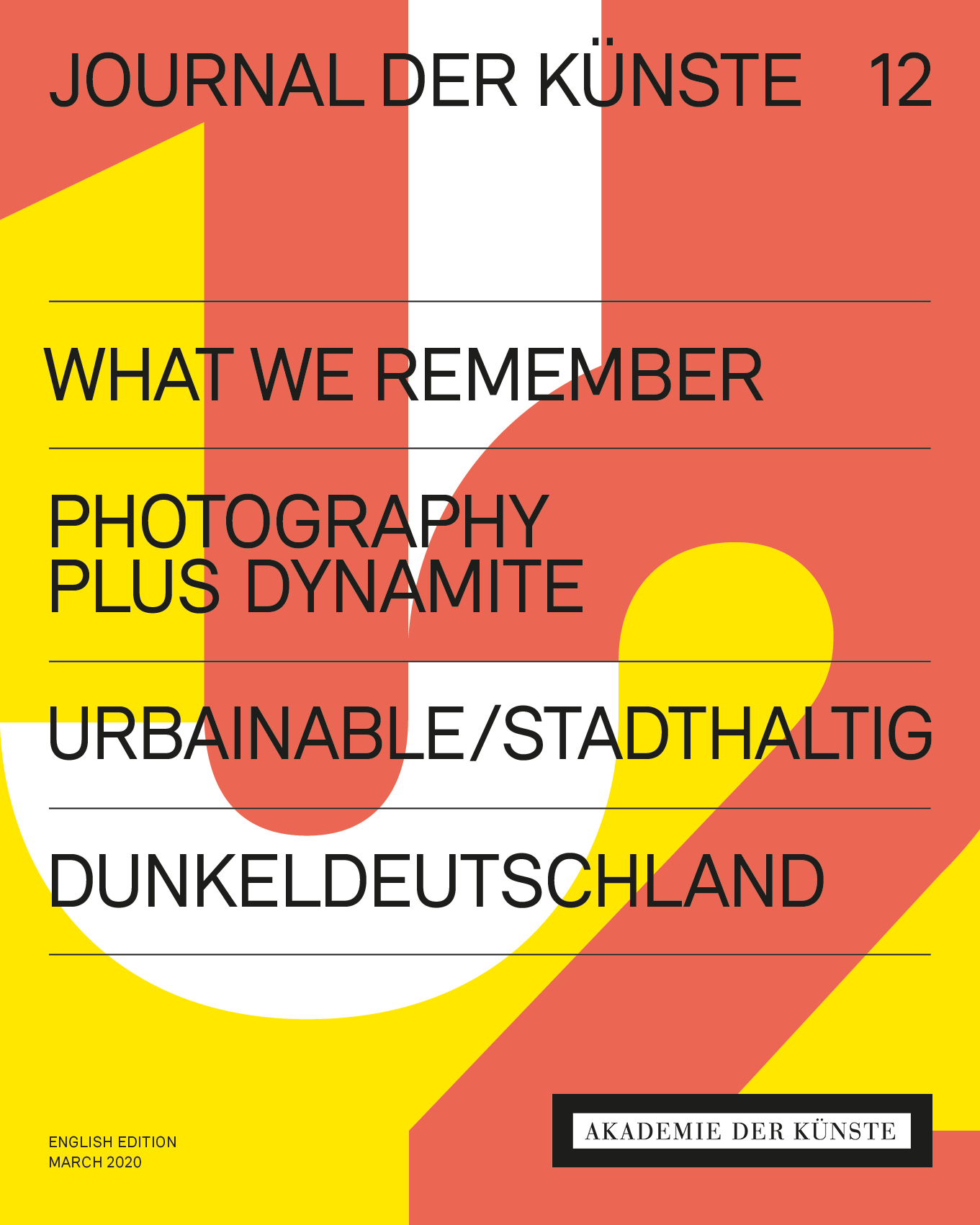
Journal der Künste 12
Published three times a year (German/English) available free of charge ISSN (Print EN) 2627-2490
Journal der Künste 12 with the following articles: Aleida Assmann on the importance of body memory; Enis Maci with Fackelmarsch mit Blob, oder: Wir und andere Phantome; Volker Braun, Klaus Wolfram and Katharina Warda on a society thirty years after the fall of the Wall; Tim Rieniets, Matthias Sauerbruch and Jörn Walter on the “Urbainable–stadthaltig” exhibition about the role of the city and its architecture in times of new challenges. News from the archives include articles on the exceptional artist Christoph Schlingensief, the exiled writer Hedda Zinner, the Akademie exhibitions 1786–1943 and much more.
To order the print edition: info@adk.de
Reading samples
- Tim Rieniets, Matthias Sauerbruch and Jörn Walter: urbainable/stadthaltig: How to Sustain the Freedom of the City in Times of Climate Crisis (PDF)
- Maria Gough: Brothers in Arms: The Making and Migration of Black and White Unity (PDF)
- Klaus Wolfram: What Was the East Germans' Political Energy, and How Did It End? (PDF)
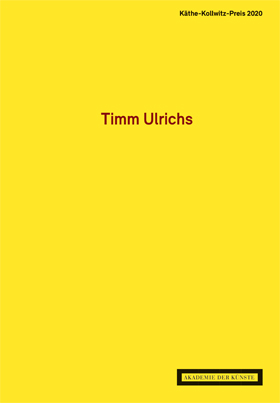
Timm Ulrichs
Käthe-Kollwitz-Preis 2020
Akademie der Künste, Berlin German, 48 pp., 44 ill. ISBN 978-3-88331-239-2 Ordner no. 9035 € 10
The conceptual art of Timm Ulrichs, which critically reflects the strategies of visual representation against the background of the “Linguistic Turn”, is the focus of Peter Weibel's essay. The media artist and theorist shows how Ulrichs – by demonstrating the enchantment of the mind through words and images – skilfully bridges the gap between innovation and creativity so that he always hits the mark artistically.

Markus Peter, Ulrike Tillmann
Hans Scharoun and the Development of Small Apartment Floor Plans
The Residential High-Rises Romeo and Julia, 1954–1959
Park Books AG, Zürich / In cooperation with the Akademie der Künste, Berlin 2020
English, 232 pp., 258 ill.
ISBN 978-3-03860-157-9
Order no. 2072-E
€ 58
The publication on the Hans Scharoun’s residential high-rises “Romeo” and “Julia” shed light on the discussions in residential housing research that Scharoun referenced in his work. His designs illustrate the expanding range of knowledge about residential floor-plans. In addition to comprehensive planning documentation, the book features contemporary photos by Georg Aerni highlighting the buildings’ expressive appearance.
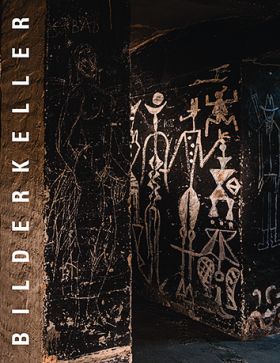
Picture Cellar. Murals in the Cellar of the Akademie der Künste (English edition)
Angela Lammert und Carolin Schönemann im Auftrag der Akademie der Künste
Akademie der Künste, Berlin 2019
English, 208 pp.,
100 ill.
ISBN 978-3-88331-238-5
Best.-Nr. 1191-E
€ 15
The carnival-themed murals painted by the 1957/58 master students in the coal cellar of the Akademie der Künste on Pariser Platz form a unique legacy left by a young opposition faction in East Berlin's painting scene. The book is aimed at a broad audience with informative texts on the artists involved, as well as contemporary and new photos of the murals themselves. It also caters to experts with new archival findings and problem-oriented essays.
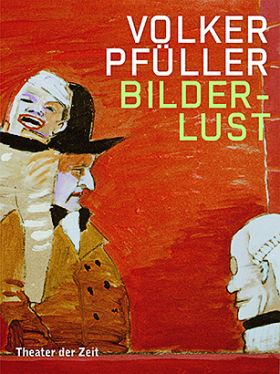
Volker Pfüller. Bilderlust
Stephan Dörschel
Theater der Zeit, Berlin / Akademie der Künste, Berlin 2019
German, 192 pp.,
600 ill.
ISBN 978-3-95749-234-0
Best.-Nr. 5052
out of print
For over 50 years now, Volker Pfüller has been creating unmistakable stage designs for theatre. His collaboration with Alexander Lang at the Deutsches Theater in Berlin during the eighties was legendary. The book documents his wide range of visual creativity as shown in his designs for stage and costume, his legendary book illustrations and his independent artistic work. Contributions by Friedrich Dieckmann, René Grohnert, Thomas Glöß et al.
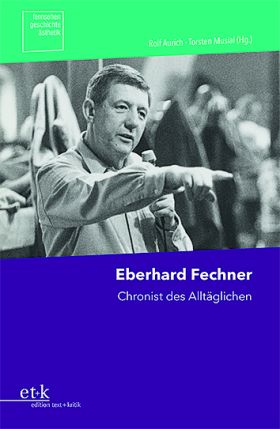
Eberhard Fechner. Chronist des Alltäglichen
Rolf Aurich, Torsten Musial, Akademie der Künste, Deutsche Kinemathek - Museum für Film und Fernsehen
edition text + kritik, München 2019
German, 212 pp.,
41 ill.
ISBN 978-3-86916-868-5
Best.-Nr. 6043
€ 29
Eberhard Fechner was a genre-defining documentary filmmaker working in West German television. The fourth volume in the series Fernsehen. Geschichte. Ästhetik is dedicated to this chronicler of everyday life. In their essays, Rolf Aurich, Matthias Dell, Jan Gympel and Sven Kramer explore aesthetic aspects of his films, his unfinished film projects, his interview techniques and his commitment to the idea, initiated in the Akademie der Künste, of a German media library, which exists today as the Mediathek Fernsehen in the Deutsche Kinemathek.
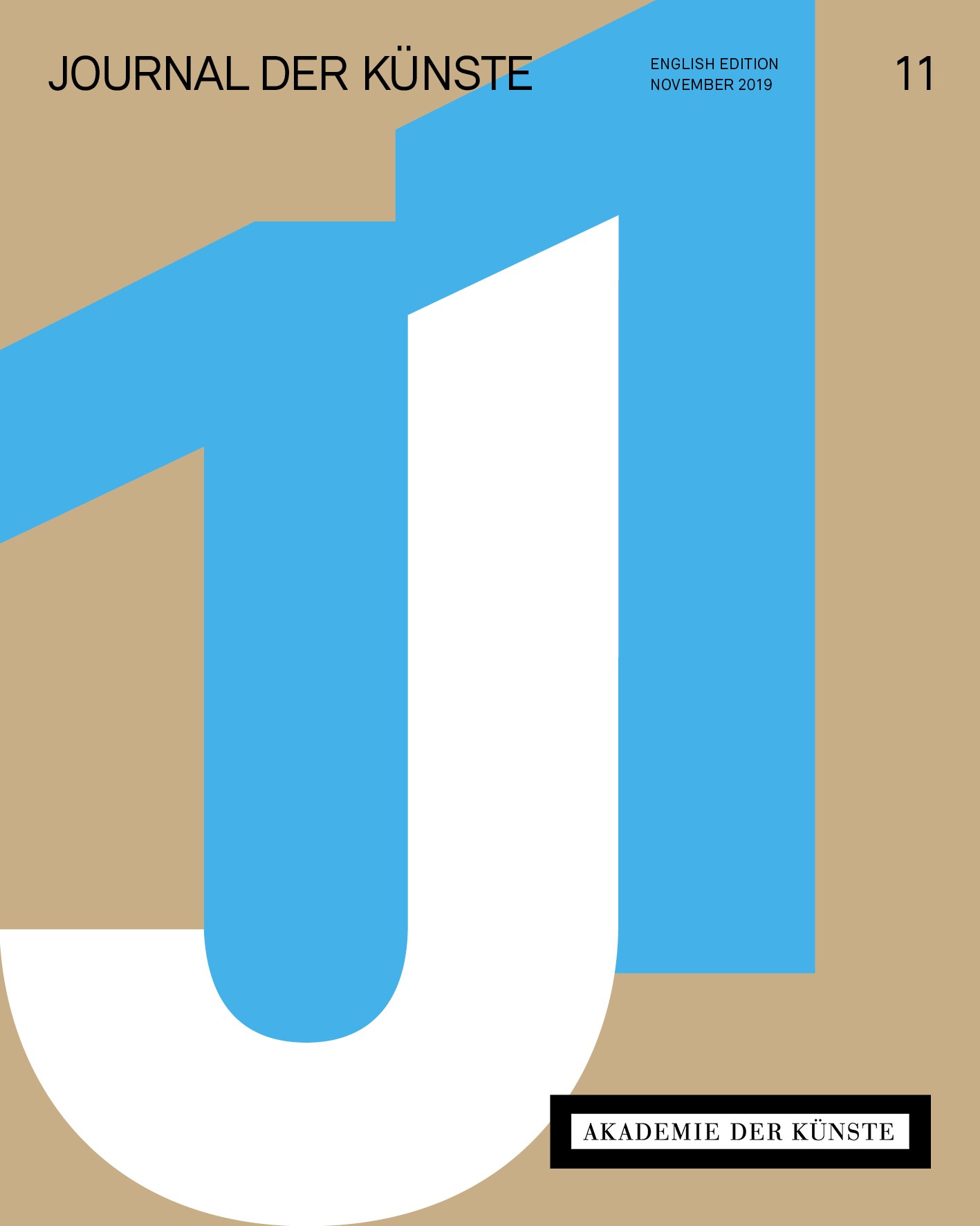
Journal der Künste 11
Published three times a year (German/English)
available free of charge
ISSN (Print EN) 2627-2490
Journal der Künste 11, with the following articles: Thoughts on a European alliance of the academies by Jeanine Meerapfel; Carte Blanche for Doris Dörrie; Kathrin Röggla with Spaltpilz on censorship and persecution in art; Heidi Specker on Helga Paris, as well as articles by Ramy Al-Asheq and Cemile Sahin from the JUNGE AKADEMIE. From the archive: Precision and pathos – On the new edition of Sonate pour piano by Jean Barraqué; a letter from Theodor Fontane to Carl Hauptmann as an artefact; and much more.
To order the print edition: info@adk.de
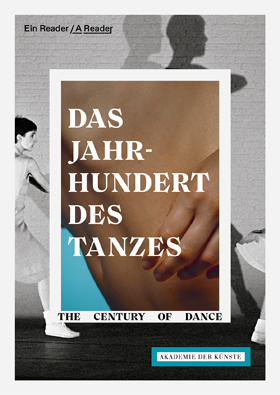
The Century of Dance
A Reader
Johannes Odenthal on behalf of the Akademie der Künste, Berlin
Akademie der Künste , Berlin / Alexander-Verlag, Berlin 2019
German/English, 336 pp.,
150 ill.
ISBN ISBN 978-3-89581-510-2
€ 19,90
The 20th century is the century of dance. Under this pointed thesis, awakenings, emancipation movements and aesthetic transformations of modern and contemporary dance are brought together in 100 photographs and statements by dancers, from Isadora Duncan to Mary Wigman, Merce Cunningham and Pina Bausch to Anne Teresa De Keersmaeker and Xavier Le Roy, among others. With accompanying essays by Gabriele Brandstetter, Franz-Anton Cramer, Johannes Odenthal and Madeline Ritter.

Jean Barraqué
Sonate pour piano
Bd. 1: Partitur
Bd. 2: Kommentar
Heribert Henrich (ed.)
Akademie der Künste, Berlin / Bärenreiter, Kassel 2019
German/English,
2 vol.: 53 and 132 pp., 2 facsimiles
ISMN 979-0-006-56760-7
€ 59
Sonate pour piano (1950–1952) by Jean Barraqué (1928–1973) enjoys a legendary reputation as probably the earliest attempt to reconcile the idiom of integral serialism with a monumental form. The work is now presented in a new critical edition, for which all handwritten and printed sources were subjected to an in-depth analysis and evaluation for the very first time.
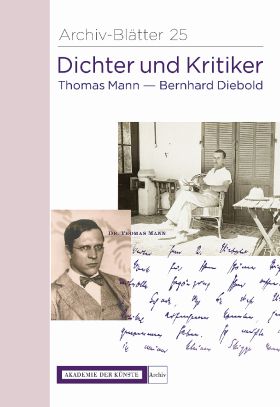
Archiv-Blätter 25
Dichter und Kritiker.
Thomas Mann – Bernhard Diebold
Dirk Heißerer on behalf of the Akademie der Künste (ed.)
Akademie der Künste, Berlin 2019
German, 216 pp.,
117 ill.
ISBN 978-3-88331-234-7
Best.-Nr. 4038
€ 18
Zwischen 1917 und 1940 wechselte Thomas Mann ausführliche Briefe mit Bernhard Diebold, einem der entscheidenden Literatur- und Theaterkritiker der Weimarer Republik. Dirk Heißerer hat die bislang unbekannte Korrespondenz aus dem Archiv ediert und kommentiert. Der Band bietet eine faszinierende Rekonstruktion, angereichert durch Bernhard Diebolds Besprechungen – vom Zauberberg bis zu den Josephs-Romanen.
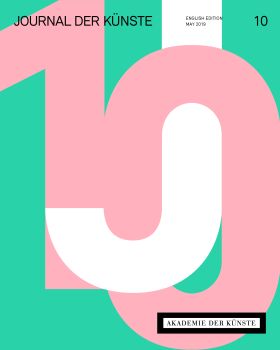
Journal der Künste 10
Published three times a year (German/English)
available free of charge
ISSN (Print EN) 2627-2490
Journal der Künste 10 with the following contributions: The Journal der Künste 10 with the following key topics: Between Art and Politics – The Building at Pariser Platz, on the Actuality of Dance Heritage – From Mary Wigman to Johann Kresnik, the presentation of this year's fellows of the JUNGE AKADEMIE, and much more.
To order the print edition: info@adk.de
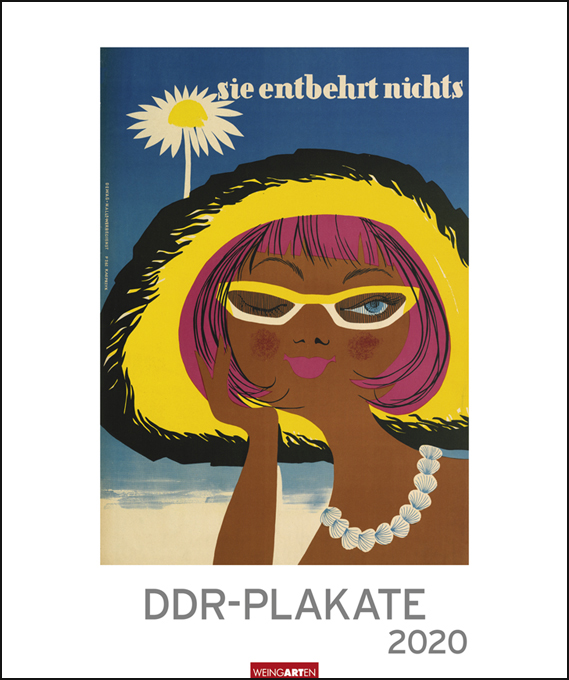
Kalender 2020: DDR-Plakate
Akademie der Künste, Berlin / KV&H Verlag Weingarten 2019
German, 14 pp.,
13 ill.
ISBN 9783840077852
Best.-Nr. 1192
out of print
How about a bit more? DEWAG was a state-run agency in the GDR responsible for both political communication and product advertising. Twelve new designs of the 1950s and 1960s from the poster collection of the Akademie der Künste, accompanied by short texts by Matthias Biskupek, inform the public about harvest festivals, healthy nutrition, tights and “cute summer sandals”.

Karl Fruchtmann
Ein jüdischer Erzähler
Torsten Musial, Nicky Rittmeyer (eds.)Series "Fernsehen. Geschichte. Ästhetik" [Television. History. Esthetics], Vol. 1, Akademie der Künste, Deutsche Kinemathek – Museum für Film und Fernsehen (eds.)
edition text + kritik, Munich 2019
German, 240 pp., 43 ill.
ISBN 978-3-86916-751-0
Best.-Nr. 6042
€ 29
Karl Fruchtmann's television movies pursue fundamental issues of human oppression, ostracism and violence committed against fellow human beings. They are profoundly influenced by Fruchtmann's experience in National Socialist concentration camps, and are testaments to his lifelong fight not to let the Shoah be forgotten.
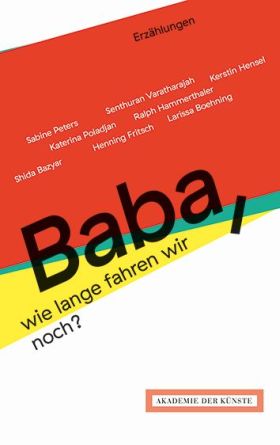
Baba, wie lange fahren wir noch? Erzählungen
Akademie der Künste, Berlin 2019
German, 256 pp.
ISBN 978-3-88331-233-0
Best.-Nr. 4035
€ 12
This collection of stories is the result of an unusual project: Teenagers and young adults who have fled to Germany joined forces with authors Shida Bazyar, Larissa Boehning, Henning Fritsch, Ralph Hammerthaler, Kerstin Hensel, Sabine Peters, Katerina Poladjan and Senthuran Varatharajah to form "storytelling tandems". Seventeen literary narratives emerged from these intensive encounters over a period of one year.
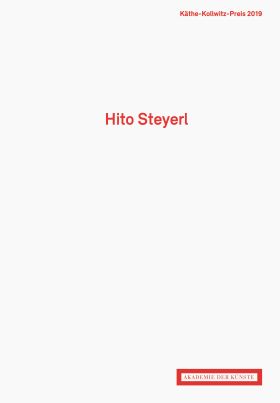
Hito Steyerl
Käthe-Kollwitz-Preis 2019
Akademie der Künste, Berlin 2019
German/English
46 pp., 14 ill.
ISBN 978-3-88331-232-3
Best.-Nr. 9034
out of print
In his essay, art historian Florian Ebner addresses the artistic discourse of Hito Steyerl and reflects on the material and political nature of her images in a digital and globalised world. He touches on general questions about the significance of photography, which is constantly being reassessed and optimised, removing itself from visible reality in this process.
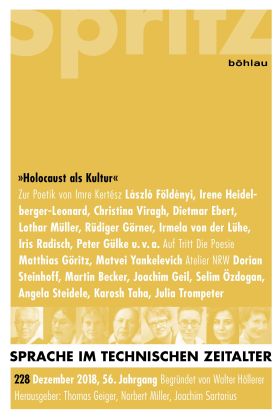
Holocaust als Kultur
Zur Poetik von Imre Kertész
Sprache im technischen Zeitalter, Heft 228, December 2018
German, 236 pp., 15 ill.
ISSN 0038-8475
€ 14
Under the title "Holocaust as Culture: On the Poetics of Imre Kertész", in April 2018, writers, literary scholars, critics, translators and companions of the winner of the Nobel Prize for Literature, who passed away in 2016, met at the first international conference on Imre Kertész, who also was a member of the Akademie. The lectures by Dietmar Ebert, Peter Gülke, Irene Heidelberger-Leonard, Katalin Madácsi-Laube, Lothar Müller, Iris Radisch and Christina Viragh, among others, are documented in this publication. Preface by Irene Heidelberger-Leonard, Jörg Feßmann und Ingo Schulze.

Journal der Künste 9
Published three times a year (German/English)
available free of charge
ISSN (Print EN) 2627-2490
Journal der Künste 9 with the following contributions: carte blanche for Klaus Staeck, insights into The Walk by Jochen Gerz, Durs Grünbein and Matthias Weichelt in conversation on the occasion of the 70th anniversary of Sinn und Form, Wilfried Wang on Mythos Bauhaus, the radio play manuscript for Der Rechtsruck by Georg Seeßlen, Wolfgang Kaleck on (Post-)Colonial Injustice and legal Interventions. From the archives: Otto von Bismarck's honorary membership certificate as a new acquisition, Hanns Eisler scores as finds, and much more.
To order the print edition: info@adk.de
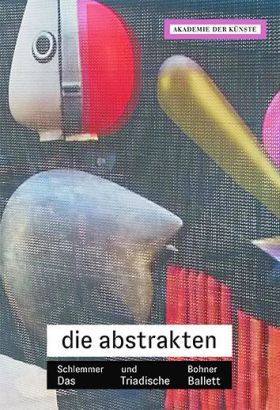
Norbert Stück
Die Abstrakten. Oskar Schlemmer und Gerhard Bohner. Das Triadische Ballett
Akademie der Künste, Berlin 2019
German, 80 pp., 76 ill.
ISBN 978-3-88331-231-6
Best.-Nr. 5050
€ 13
The Triadic Ballet by Oskar Schlemmer is one of the most unusual stage works of the 20th century. The documentation for the work describes the development of the costumes from the premiere in 1922 to the reconstruction by dancer and choreographer Gerhard Bohner in 1977, to their appearance within present-day triadic space. One hundred years of history that led to extraordinary success, despite the historical obstacles.

Journal der Künste 8
Special Edition: The Archives
English
available free of charge
ISSN 2510-5221
For many an archive is an unknown, if not enigmatic place. Frequently used metaphors, such as treasure trove, labyrinth or cultural memory, underscore this emphasis. A special issue of the Journal der Künste is dedictated to the Archives at the Akademie der Künste. Members, researchers and staff tell stories about documents and pieces in the collections in an attempt to make archival work more transparent. The overlying questions are: What is preserved in an archive? And how do these surviving objects shape our perception of what remains of their makers?
To order the print edition: info@adk.de
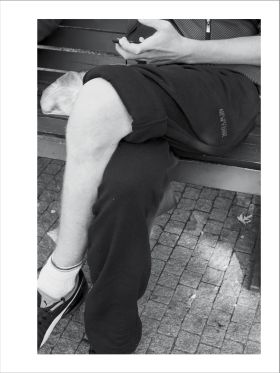
Stephanie Kiwitt
Máj / My
Akademie der Künste, Berlin, Camera Austria, Graz (eds.)
Spector Books, Leipzig, 2018
Czech / English
132 pp., 87 ill.
ISBN 978-3-95905-239-9
€ 28
In 1996 the British supermarket chain Tesco took over "Máj", an old-fashioned department store in Prague. In 2009 it was renamed "My". Although both words are pronounced the same, the new name nevertheless opened another field of association. In English "my" refers to an individual; in Czech it means "we". Starting out from this semantic differentiation, Stephanie Kiwitt (Ellen Auerbach Fellow 2016), set off on a photographic search for clues in the streets of Prague.
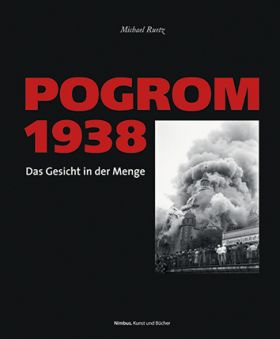
Michael Ruetz
Pogrom 1938
Das Gesicht in der Menge
Akademie der Künste, Berlin, Nimbus, Wädenswil 2018
German
156 pp., 125 ill.
ISBN 978-3-03850-050-6
Best.-Nr. 7016
€ 29,80
Relying on materials from international archives, the author documents what "normal" citizens actually did, endorsed and saw. The images and eyewitness accounts reveal far-reaching complicity among perpetrators and followers: here the destructive rage and triumphant jeers of an unbridled mob; there the cowardly curiosity of onlookers. This publication unmistakably shows how 9 November 1938 became the testing ground and starting point of the Holocaust – right before everyone's eyes.
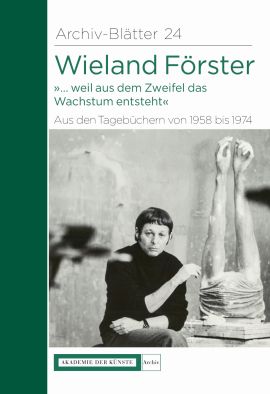
Archiv-Blätter 24
Wieland Förster "... weil aus dem Zweifel das Wachstum entsteht"
Aus den Tagebüchern von 1958 bis 1974
Eva Förster on behalf of the Akademie der Künste (ed.)
Akademie der Künste, Berlin 2018
German, 128 pp.,
20 ill.
ISBN 978-3-88331-227-9
Best.-Nr. 1181
€ 12
Excerpts from the unpublished diaries illuminate the artistic selfunderstanding and personal thoughts of the young Wieland Förster from his time as a master student to membership at the Deutsche Akademie der Künste (GDR). A document on walking with one's head held high in difficult times. The excerpts are supplemented by an interview with the artist, an essay by Hannes Schwenger and a contribution from Michael Krejsa on the Wieland Förster Archive.

Nina Schleif
Schlachter des guten Gewissens.
Der Zeichner Paul Holz 1883–1938
Kunstforum Ostdeutsche Galerie Regensburg (ed.)
Klinkhardt & Biermann, Munich, 2018
German
176 pp., 164 ills.
ISBN 978-394361-6-53-8
€ 34,95
Paul Holz (1883–1938) was one of the most exceptional German illustrators of the 20th century. Nevertheless, he was denounced as "degenerate" after 1933 and has only gained increasing appreciation since 1990. To commemorate of the 80th anniversary of his death, the catalogue presents all works in the possession of Kunstforum Ostdeutsche Galerie in Regensburg, as well as outstanding drawings from the Akademie der Künste, whose art collection is home to the most extensive collection of works by Paul Holz.

Archive zur Musik des 20. und 21. Jahrhunderts
Band 15
Eduard Erdmann
Werner Grünzweig and Gerhard Gensch on behalf of the Archives of the Akademie der Künste (eds.)
Akademie der Künste, Berlin / von Bockel Verlag, Neumünster, 2018
German
212 pp., 47 b/w ill.
ISBN 978-3-95675-024-3
Best.-Nr. 3041
€ 24,90
At the start of the 1920s, Eduard Erdmann (1896–1958) made a name for himself as a pianist and composer. The present volume is dedicated to his compositional oeuvre, his personality and his contacts to artists in Berlin in the 1920s, such as Ernst Krenek and Hans Jürgen von der Wense. An edition on his correspondence with Artur Schnabel and essays about Erdmann's ties to Riga complete this overview of the artist.

Adrian Piper
Käthe-Kollwitz-Preis 2018
Akademie der Künste, Berlin 2018,
German
48 pp., 21 ill.
ISBN 978-3-88331-230-9
Best.-Nr. 9033
€ 10
In his essay Structures of Response, Austrian art historian Helmut Draxler examines Adrian Piper's transformation of Minimalism. Her artistic approach has become internationally known through works that critically examine social identities and their representation in media images.
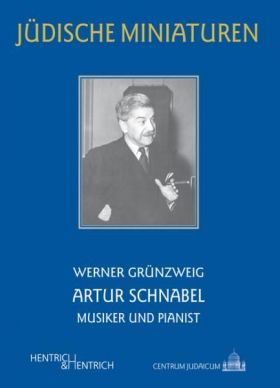
Werner Grünzweig
Artur Schnabel. Musician and Pianist
Hentrich & Hentrich, Berlin 2017 (Jewish Miniatures, vol. 205a)
English
76 pp., 14 ill.
ISBN 978-3-95565-288-3
€ 8,90
Werner Grünzweig, who has published numerous books about Artur Schnabel (1882–1951), presents the first biography of Schnabel in German with this volume. It honours Schnabel as a performer, composer and theorist. His concert activity, records, publications and lectures have changed our concert life up to the present day.

Journal der Künste 7
Published four times a year(German/English),
available free of charge
ISSN (Print) 2510-5221
The Journal der Künste 7 with contributions of: Moshe Zimmermann, Micha Ullman and Matthias Flügge, Francis Kéré, Mathias Greffrath, Kathrin Röggla, Michael Ruetz, Christian Bommarius, László F. Földényi, Karin Sander, Eran Schaerf, Helmut Draxler, Christina Weiss, and much more.
To order the print edition: info@adk.de
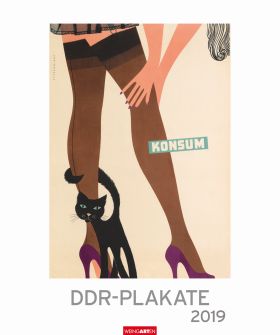
GDR Posters
Calendar 2019
Akademie der Künste / KV&H Verlag, Weingarten, 2018
Wall calendar
German
Best.-Nr. 1186
out of print
Winter Service, "Haferkakao" (oat cocoa), Baltic Sea Week and Tanning Cream! In the 1950s, design and advertising content were as varied as the product range of the planned economy was manageable. Twelve more motifs from the poster collection of the Akademie der Künste with short texts by Matthias Biskupek offer insights into the world of GDR advertising graphics.
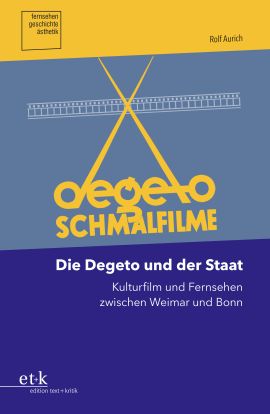
Rolf Aurich
Die Degeto und der Staat.
Kulturfilm und Fernsehen zwischen Weimar und Bonn
Series "Fernsehen. Geschichte. Ästhetik" [Television. History. Esthetics], Vol. 1, Akademie der Künste, Deutsche Kinemathek – Museum für Film und Fernsehen (eds.)
edition text + kritik, Munich 2016
German, 252 pp., 18 ill.
ISBN 978-3-86916-605-6
€ 29
The "Deutsche Gesellschaft für Ton und Bild" (Degeto) was founded in 1929 to promote cultural films. The character of Degeto changed profoundly at the end of the 1950s when the ARD turned it into a central instrument of film acquisition for its television programming. Rolf Aurich, author and editor at the Filmmuseum Berlin, reviews the first three decades of Degeto's history.
Carsten Krohn
Hans Scharoun. Buildings and Projects
Birkhäuser in cooperation with the Akademie der Künste, Berlin
Basel, 2018
208 pp., 350 ill.
English edition 978-3-0356-0691-1
€ 59,95
The book is the first to document in text and image all the well-known buildings designed by Hans Scharoun, including his early work in East Prussia. Photographs specially taken by Carsten Krohn, historical photographs and plans from the Hans-Scharoun-Archiv at the Akademie provide a new perspective on this expressive, organic architecture.

JUNGE AKADEMIE
Dokumentation 2017
Akademie der Künste, Berlin, 2018
German, 128 pp., 222 ill.
ISBN 978-3-88331-228-6
Best.-Nr. 1182
€ 6
This richly illustrated publication presents the special events of the JUNGE AKADEMIE in 2017, including many encounters with Akademie members and new partners. Under the rubric "RetroProSpekt MODERNE", Akademie fellows examined Modernism less as a style fixed in time than as an artistic position. They raised questions about what remains unfulfilled in Modernism, about sustainability and necessary reforms.
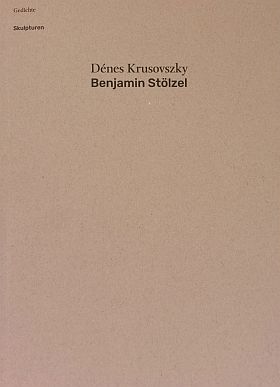
Dénes Krusovszky
Benjamin Stölzel
Poems
Sculptures
Akademie der Künste, Berlin, 2018
German/English/Hungarian
48 pp., 30 ill.
ISBN 978-3-88331-229-3
Best.-Nr. 7015
€ 10
As part of the Berlin Fellowship awarded by the Akademie der Künste in Berlin, Dénes Krusovszky (Literature Fellow) and Benjamin Stölzel (Visual Arts Fellow) got to know each other in spring 2017. The poems in this book by Dénes Krusovszky were written as a reaction to selected sculptures by Benjamin Stölzel.
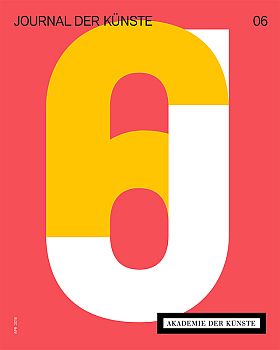
Journal der Künste 6
Published four times a year(German/English)
available free of charge
ISSN (Print) 2510-5221
Journal der Künste 6 offers several artists' contributions: a photo series on Silvia Bovenschen; a carte blanche by Monika Rinck; the continuation of the experimental dialogue between Kathrin Röggla and Manos Tsangaris; a story about someone who fled from Syria by Senthuran Varatharajah; a stay in Berlin by Fiston Mwanza Mujila; acoustic poetry, intuitive culture of listening and a contribution on Heinrich Mann and the Akademie from the archive, and much more.
To order the print edition: info@adk.de
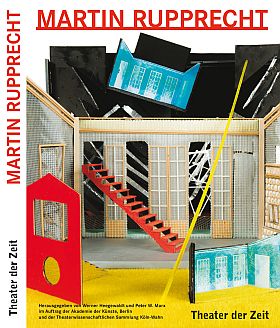
Martin Rupprecht
BühnenBilder
Werner Heegewaldt and Peter W. Marx on behalf of the Akademie der Künste, Berlin, and the Theaterwissenschaftliche Sammlung of the Universität zu Köln (eds.)
Theater der Zeit, Berlin 2018
240 pp., over 400 ill.
ISBN 978-3-95749-139-8
Best.-Nr. 5049
€ 25
An extensively illustrated book is published about the set and costume designer Martin Rupprecht's life's work for the stage, which also includes his freelance artwork for the first time. Essays by scholars and Rupprecht's companions reflect his oeuvre and its developments.
Texts by Martin Rupprecht, Julia Burde, Stephan Dörschel, Michael Hampe, Volker Hassemer, Werner Heegewaldt, Nele Hertling, Gerald Köhler, Peter W. Marx, Sabine Sterken, Christoph Tannert, Matthias Zwarg.
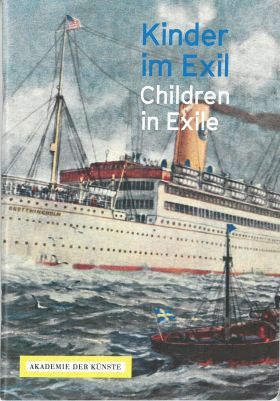
Kinder im Exil / Children in Exile
Gesine Bey on behalf of the Akademie der Künste, Berlin, 2018
German/English
48 pp., 44 ill.
€ 2
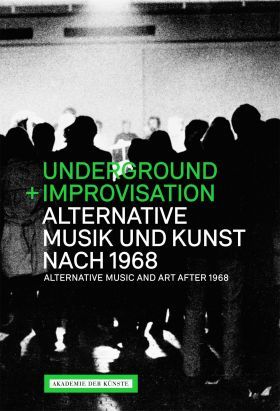
Underground + Improvisation
Alternative Music and Art after 1968.
Akademie der Künste, Berlin 2018
German/English
132 pp., 53 ill.
ISBN 978-3-88331-226-2
Best.-Nr. 7013
out of print
The Reader for this season's main topic at the Akademie compiles text essays by curators and protagonists, who introduce the artistic developments of the West Berlin music label FMP and its unique concert events as a dynamic art and music scene in Eastern Europe after 1968, and as an expression of a multifaceted counterculture in Poland, the GDR, Czechoslovakia, the Soviet Union and Hungary.
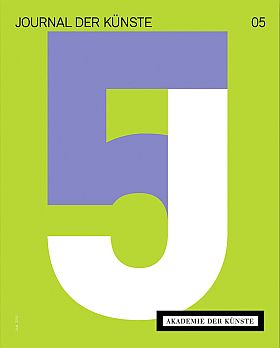
Journal der Künste 5
Published four times a year(German/English),
available free of charge
ISSN (Print) 2510-5221
Journal der Künste 5 will be available in German and English now, providing an overview of the focus of the future programme and information about new acquisitions and finds from the Akademie's archives. With contributions on the Underground and Improvisation and Abfallprodukte der Liebe projects or the Wo kommen wir hin interdisciplinary research project, as well as the lecture My Inner Europe (Cette Europe qui est en moi) by Alain Mabanckou, and the lecture on the Valeska Gert Visiting Professorship by Lia Rodrigues, and much more.
To order the print edition: info@adk.de
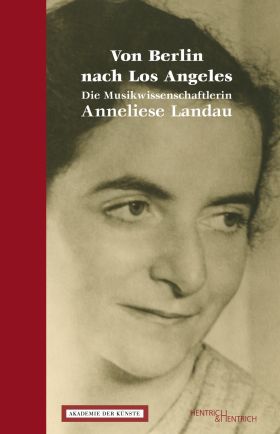
Von Berlin nach Los Angeles. Die Musikwissenschaftlerin Anneliese Landau
Daniela Reinhold on behalf of the Akademie der Künste, Berlin (ed.)
Akademie der Künste / Hentrich & Hentrich, Berlin, 2017
German, 340 pp., 15 ill.
ISBN 978-3-95565-226-5
Best.-Nr. 3044
€ 27,90
As a young musicologist, Anneliese Landau (1903–1991) was at the beginning of a promising career. In 1933, she was left with only the activities for the Jewish cultural association. In 1940, she emigrated to the United States and soon found a new home in Los Angeles, where she worked as the Music Director of the Jewish Center Association. Her autobiography, together with extracts from letters from her parents who remained in Berlin as well as Landau’s correspondence with composers, have now been published for the first time.

In die Luft schreiben
Luc Bondy und sein Theater
Geoffrey Layton on behalf of the Akademie der Künste (ed.)
Akademie der Künste / Alexander Verlag Berlin, Berlin, 2017
German, 320 pp., 300 ill.
ISBN 978-3-89581-451-8
Best.-Nr. 5048
€ 35
In November 2015, the director, artistic director and writer Luc Bondy died in Paris at the age of 67. This book explores the wealth and variety of his work – his international theatre career, reflected by his companions, as well as the introspective thoughts of a writer and the creative chaos that resulted from his stage productions.

Journal der Künste 4
Special Edition:
Die Mitglieder
(The Members of the Akademie der Künste)
Published four times a year,
available free of charge
ISSN 2510-5221
German
To order the print form: info@adk.de
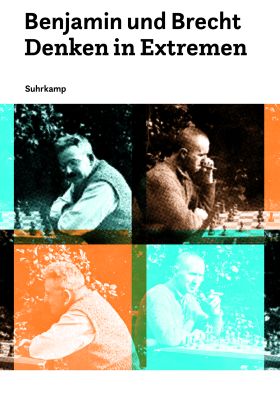
Benjamin und Brecht.
Denken in Extremen
[Thinking in Extremes]
Erdmut Wizisla on behalf of the Akademie der Künste (ed.)
Akademie der Künste / Suhrkamp, Berlin 2017
German, 284 pp., 122 ill.
ISBN 978-3-518-42083-6
Best.-Nr. 4032
€ 32
Communication between the well-known Svendborg chess partners recalls the royal game: It employed tiring tactics, surprise attacks, retreat, strategic partnership, checkmate – and a new game. The essays and artistic commentary in the book turn the spotlight on an extraordinary constellation, in which Benjamin and Brecht appear as contemporaries in a century of extremes. They developed models for art, for politics, thought processes and for life itself; sometimes "extreme on a trial basis" and sometimes playful. With texts by Minou Arjomand, Broomberg & Chanarin, Zoe Beloff, Durs Grünbein, Barbara Hahn, Alexander Kluge, Mark Lammert, Bernd-Peter Lange, Burkhardt Lindner, Thomas Martin, Ursula Marx, Frank-M. Raddatz, Jan Philipp Reemtsma, Kristin Schulz, Marcus Steinweg, Steffen Thiemann, B. K. Tragelehn, Edmund de Waal and Erdmut Wizisla.

Mord im Fahrstuhlschacht
Tatsachenreihe by Bertolt Brecht and Walter Benjamin
Woodcuts by Steffen Thiemann
Graphic Novel
Akademie der Künste, Berlin 2017
German, 36 pp., 33 ill.
ISBN 978-3-88331-223-1
Best.-Nr. 4033
€ 7,50
Benjamin and Brecht decided to write a crime novel in autumn 1933. Steffen Thiemann has turned Brecht’s plot into woodcuts and set down Benjamin’s ideas as footnotes. It’s a story about blackmail that ends fatally. With texts by Steffen Thiemann and Erdmut Wizisla.
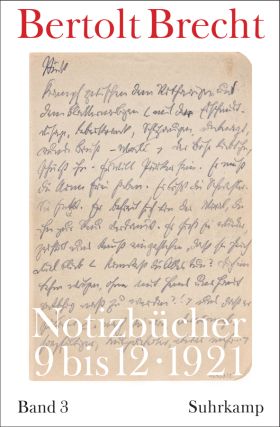
Bertolt Brecht, Notizbücher, Band 3: 1921
Martin Kölbel and Peter Villwock on behalf of the Akademie der Künste (eds.)
Akademie der Künste / Suhrkamp, Berlin 2017
German, 706 pp., 268 ill.
ISBN 978-3-518-42596-1
€ 58
Volume 3 of this notebook edition faithfully publishes four notebooks from 1921 for the first time. The focus is on Brecht’s third major work for the theatre, Im Dickicht (In the Jungle). In addition, numerous unknown drafts, notes about readings and private debates can also be found. The editors expand on Brecht’s entries in detailed text commentaries, while providing new knowledge about his work and biography.

Kollwitz neu denken. Käthe-Kollwitz-Preisträger der Akademie der Künste, Berlin
Akademie der Künste, Berlin, and Käthe Kollwitz Museum Köln (eds.)
Akademie der Künste, Berlin 2017
German, 96 pp., 48 ill.
ISBN 978-3-88331-225-5
Best.-Nr. 1180
€ 14
The Akademie der Künste has been awarding the Käthe Kollwitz Prize since 1960, and it is one of its oldest distinctions. In this anniversary year, “Kollwitz 150”, the artist’s assertion, “I want to exert influence in these times when people are so at a loss and in need of help”, still sends out a clear impulse for contemporary art production. This is the focus of the exhibition at the Käthe Kollwitz Museum in Cologne.
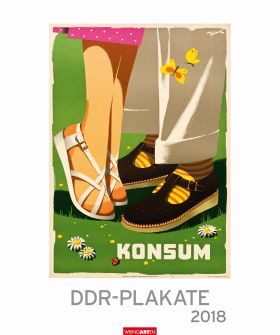
GDR Posters
Calendar 2018
Akademie der Künste / KV&H Verlag, Weingarten, 2017
Wall calendar
Best.-Nr. 1179
€ 16,99
The controlled economy of the GDR advertised a straightforward range of products in surprising, ingenious and effective ways. Twelve colourful motifs from the Akademie der Künste’s poster collection offer insights into the wonderful, funny and effective world of GDR advertising from the 1950s. With short texts by Matthias Biskupek.

Journal der Künste 3
Published four times a year,
available free of charge
ISSN 2510-5221
German
Katja Lange-Müller opens the third edition of the Journal der Künste with thoughts on literature and writing, followed by Jutta Brückner’s commitment to work against "unconscious bias". With essays by Nikita Dhawan, and from the Akademie archives, the Akademie’s upcoming main focus – on the subject of colonialism – is being prepared. Christina Kubisch contributes an artistic analysis of silence, while Annett Busch and Tobias Hering lead tours in the exhibition on Danièle Huillet and Jean-Marie Straub. Jeanine Meerapfel talks with Rainer Esser, CEO of ZEIT Verlagsgruppe, and so much more.
To order the print form: info@adk.de

Katharina Sieverding
Käthe-Kollwitz-Preis 2017
Akademie der Künste, Berlin 2017,
German/English
48 pp., 13 ill.
ISBN 978-3-88331-221-7
Best.-Nr. 9032
€ 10
By presenting this award to Katharina Sieverding the Akademie der Künste is honouring a German artist, who was a pioneer in an age of large-scale photo art in the 1960s. The jury, made up of the Akademie members Jochen Gerz, Karin Sander and Klaus Staeck, places particular emphasis on the fact that Katharina Sieverding poses fundamental questions about artistic, political and social conditions with regard to production processes and the reception of art. A catalogue is accompanying the exhibition (beginning 12 July) of the prizewinner of the Käthe-Kollwitz-Preis, including a text by art critic and curator Hans-Jürgen Hafner.

Journal der Künste 2
Published four times a year,
available free of charge
ISSN 2510-5221
German
Debuting at the start of 2017, the new Journal der Künste will continue to be published four times a year. The free magazine provides information in German about the Akademie der Künste’s main events, publishes cultural-political contributions, introduces planned projects, and shows newly discovered objects from the archives. It is the Akademie's artistic and cultural-political thinking space. Edition 2/17 includes essays by Chantal Mouffe, Emin Alper, Gerhard Pfennig, Kathrin Röggla, Mark Lammert, et al.
To order the print form: info@adk.de
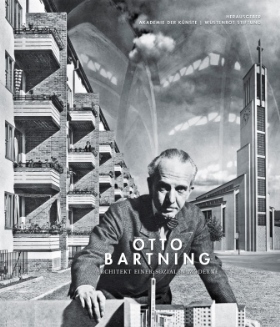
Werner Durth, Wolfgang Pehnt, Sandra Wagner-Conzelmann
Otto Bartning. Architekt einer sozialen Moderne
Akademie der Künste and Wüstenrot Stiftung (eds.)
Justus von Liebig Verlag, Darmstadt 2017
German, 128 pp., 270 ill.
ISBN 978-3-87390-393-7
out of print
This richly illustrated book to accompany the exhibition presents for the first time the main sketches, designs, models and projects from the oeuvre of an architect who, above all, is globally recognised as a seminal figure in Protestant church architecture. It documents the phases and diversity of his development from his first buildings in Imperial Germany to visions and projects as expressionism gave way to Neue Sachlichkeit in the Weimar Republic and his commitment to a postwar modernism which, through an imaginative yet restrained approach, significantly influenced the architecture of postwar Germany.

PRESENT PEOPLE.
Öffentlicher Raum entsteht erst im Gebrauch
Felix Lüdicke, Theresa Schütz on behalf of the Akademie der Künste (eds.)
Akademie der Künste, Berlin 2017
German, 80 pp., 122 ill.
ISBN 978-3-88331-222-4
Best.-Nr. 2070
€ 9,90
The architecture fellows Felix Lüdicke and Theresa Schütz created a temporary action and meeting place in the Berlin Hansaviertel with their intervention in public space. They included artists, residents, and passers-by. The publication documents their artistic work in the context of the 2015 Junge Akademie programme, which was also a contribution to the exhibition "Demo:Polis – The Right to Public Space" (2016). Essays by Michael Bräuer, Nele Hertling, Christian Schneegass, et al.

GABRIELE MÜNTER PREIS 2017
Frauenmuseum, Bonn (ed.) in
co-operation with the Akademie der Künste, Berlin
Frauenmuseum, Bonn 2017
German, 144 pp., 106 ill.
ISBN 978-3-946430032
Best.-Nr. 1178
€ 18
The prize is only open to women visual artists over the age of 40. The exhibition catalogue not only includes work by the prize winner Beate Passow but also by 19 other selected women artists: Franca Bartholomäi, Tremezza von Brentano, Nezaket Ekici, Mane Hellenthal, Margareta Hesse, Verena Kyselka, Ute Lindner, Anja Luithle, Alice Musiol, Eva von PlatenHallermund, Sibylle Prange, Vera Röhm, Christine Rusche, Heike Ruschmeyer, Corinna Schnitt, Uta Schotten, Rose Stach, Melanie Wiora, Uta Zaumseil.
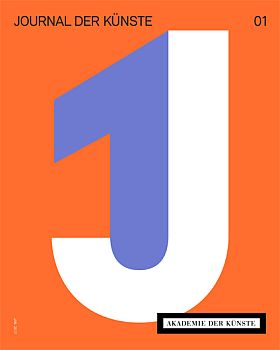
Journal der Künste 1
Published four times a year, available free of charge ISSN 2510-5221 German
The Journal der Künste looks at what is currently being created at the Akademie der Künste. It shows how diverse the aesthetic perspectives, approaches and forms of production are, both from the Archives of the Akademie and from its Sections, at the level of the Akademie members and in dialogue with our guests and visitors. An extensive editorial section features essays and lectures, along with artistic interventions, commentaries and debates on cultural policy. In regular columns such as "News from the Archives", "Finds" and "Carte Blanche" for members of the Akademie, we take a broader look beyond public programme work.
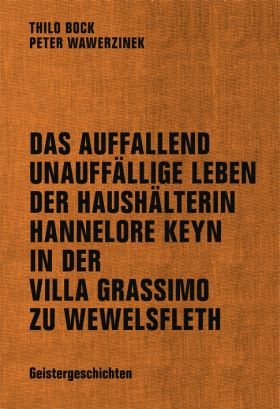
Thilo Bock, Peter Wawerzinek
Das auffallend unauffällige Leben der Haushälterin Hannelore Keyn in der Villa Grassimo zu Wewelsfleth. Geistergeschichten
Akademie der Künste / Verbrecher Verlag, Berlin 2016
German, 152 pp., 35 ill.
ISBN 978-3-88331-218-7
Best.-Nr. 4031
€ 20
Could there be a more mysterious place for a summit meeting between a legendary literary critic, a former state premier, a Nobel laureate and a feisty housekeeper than a cobwebbed room in a house on the Wilstermarsch marshland in Holstein? Together with selected writings by former Döblin scholars, Berlin authors Thilo Bock and Peter Wawerzinek dedicate their ghost stories to the housekeeper and heart and soul of 'Villa Grassimo' in Wewelsfleth, and, at the same time, narrate a piece of recent German literary history.
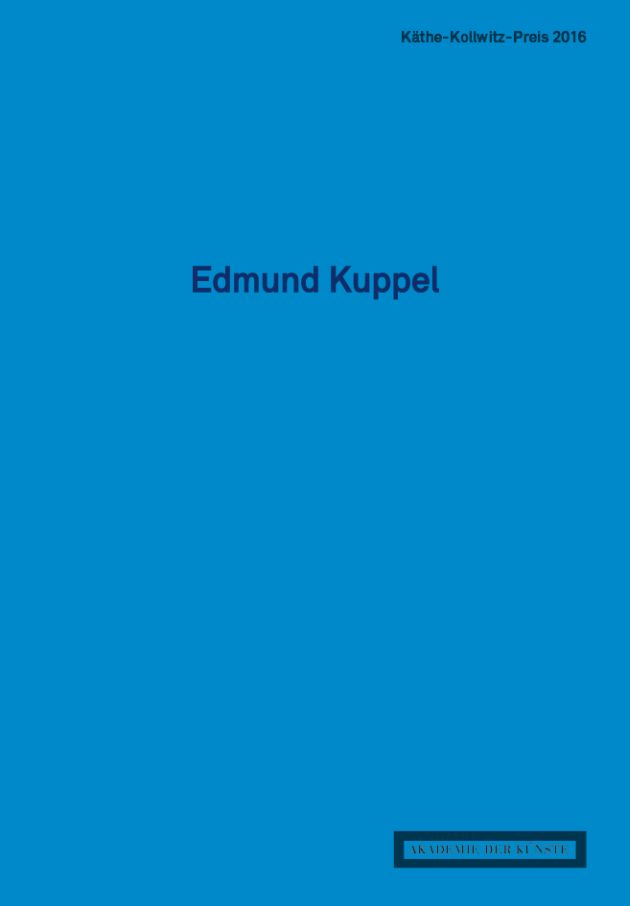
Edmund Kuppel
Käthe-Kollwitz-Preis 2016
Akademie der Künste, Berlin 2016
Edition, brochure and Leporello
German, 52 pp., 78 ill.
ISBN 978-3-88331-216-3
Best.-Nr. 9031
€ 12
For the exhibition catalogue, Edmund Kuppel has designed a special art object. From a video work of approx. 60 minutes of ten train journeys all ending in the departure station, he developed an eleventh journey in a 'book form' with a concertina fold to create a kind of endless loop. As the jury awarding this year’s Käthe Kollwitz Prize noted, "… in his artistic approach, [Edmund Kuppel] transforms his ideas into subtle sculptural structures, transforms the material into the simplest, i. e., abstract, form, in machine and media constructions expressing wonder and amazement at reality."

Peter Beauvais. Vielfalt als Konzept
Wolfgang Jacobsen, Nicky Rittmeyer (eds.)
Series "Fernsehen. Geschichte. Ästhetik" [Television. History. Esthetics], Vol. 1, Akademie der Künste, Deutsche Kinemathek – Museum für Film und Fernsehen (eds.)
edition text + kritik, Munich 2016
German, 216 pp., 35 b/w ill.
ISBN 978-3-86916-519-6
€ 32
In his work as a director, Peter Beauvais was a major influence on West German television for almost thirty years. In biographical and analytical contributions, Rolf Aurich, Julia Glänzel, Wolfgang Jacobsen and Nicky Rittmeyer illustrate how in all his works, whether for the theatre, opera, radio, film or TV, Beauvais pursued a notion of radical diversity in terms of themes and styles.

akademiefenster 11
Werner Stötzer
Inge Zimmermann on behalf of the Akademie der Künste (ed.)
Akademie der Künste, Archiv, Berlin 2016
German, 168 pp., 100 ill.
ISBN 978-3-88331-215-6
Best.-Nr. 1174
€ 15,80
Werner Stötzer (1931–2010) was one of the most important sculptors in Germany. At the same time Stötzer was also a concise narrator. The notes, letters and anecdotes published here, mostly for the first time, provide insights into his thinking processes while reflecting a piece of contemporary history. Colleagues, friends and Academy members have written reminiscences and texts for this publication in the akademiefenster series. Drawings, documents and photographs complete the material which the sculptor gave to the Academy archives during his lifetime.
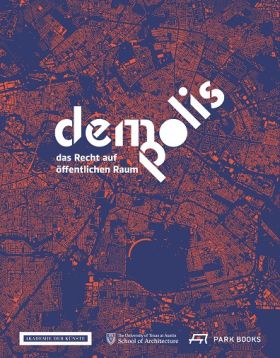
DEMO:POLIS – The Right to Public Space
Barbara Hoidn (ed.)
Park Books, Zurich / The University of Texas at Austin, School of Architecture 2016
English, 288 pp., 500 ill.
ISBN 978-3-03860-005-3 (English edition)
€ 48
The catalogue for the exhibition includes essays by international experts and case studies from architecture, sociology, art and urbanism for the redefinition of public spaces, such as Tempelhofer Feld in Berlin, Trafalgar Square in London, Campo de Cebada in Madrid and the Brooklyn Bridge Park in New York. Artistic interventions in public spaces that question the status quo and add new interpretations will also be shown, as well as the findings of an international workshop and 3D tools for public participation.
Texts by Frauke Burgdorff, Ricky Burdett, Susan Chin, Barbara Hoidn, Andrew Keen, Regula Lüscher, Florian Matzner, Jeanine Meerapfel, Cristiane Muniz, Cordelia Polinna, Alvaro Puntoni, Julio Cesar Perez, Bernhard Schneider, Renata Stih, Rainalod Uriarte, Michael Van Valkenburgh, Fernando Viégas, Jörn Walter, Wilfried Wang, Blanca Zuñiga.

Amalia Ulman & Carles Santos
Anthem
9th Berlin Biennale for Contemporary Art / Studio für Elektroakustische Musik der Akademie der Künste, Berlin
The Vinyl Factory, London 2016,
Limited Edition, VF244
Vinyl, 30 min
€ 24,99 (at the Akademie's bookshop)
In May 2016, at the suggestion of the Berlin Biennale, the composer and director Carles Santos and the artist and Instagram celebrity Amalia Ulman met one another at the Akademie der Künste for an entire week. The result of their artistic exchange is a unique record in limited edition, that combines the untamed imagination of Santos' piano playing with the fragile tenderness of Ulman's lyrics.
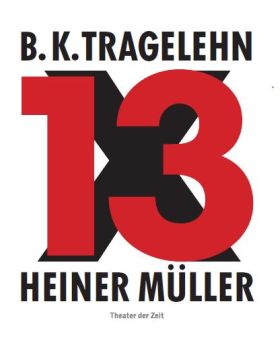
B.K. Tragelehn
13 x Heiner Müller
Carsten and Gerhard Ahrens in collaboration with Akademie der Künste (eds.)
Akademie der Künste, Archiv / Theater der Zeit, Berlin 2016
German, 184 pp., numerous ill.
ISBN 978-3-95749-067-4
Best.-Nr. 5047
€ 24,80
In a collage of photographs and texts, original accounts and documents, which are predominantly from the archives of the Akademie der Künste, this publication chronicles the joint theatre work of B.K. Tragelehn and Heiner Müller. At the same time it is a testament to two men of the theatre whose friendship went beyond their artistic collaboration. It is published on the 80th birthday of the director, poet and translator B.K. Tragelehn, who gave his archive to the Academy in 2013. It includes a catalogue of works.
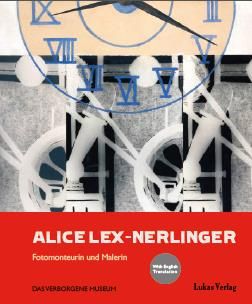
Alice Lex-Nerlinger
1893–1975
Fotomonteurin und Malerin
Marion Beckers (ed.) for Das Verborgene Museum in collaboration with Akademie der Künste, Berlin, Lukas Verlag, Berlin 2016,
German/English, 192 pp., ill.
ISBN 978-3-86732-245-4
€ 30
Painter and graphic artist Alice Lex-Nerlinger belonged to the artistic and political avant-garde in the Weimar Republic. She became famous for her work §218 (1931) attacking the law on banning abortion. Influenced by "Der Sturm" gallery's circle of artists, she started to work with modern techniques such as photography, montage and photograms. The catalogue for the exhibition in Das Verborgene Museum contains many documents and illustrations from the artist’s estate now in the Akademie der Künste Archive and art collection.
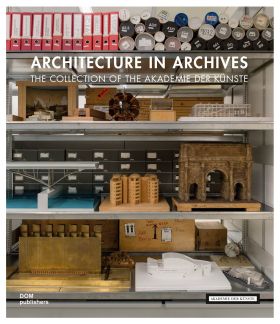
Architecture in Archives. The Collection of the Akademie der Künste
Eva-Maria Barkhofen on behalf of the Akademie der Künste (ed.)
Akademie der Künste, Archive / DOM publishers, Berlin, 2016
English Edition (Hardcover)
560 pp., 906 ill.
ISBN 978-3-86922-552-4 (EN)
Best.-Nr. 2067
€ 68
Prize winner of the DAM Architectural Book Award 2017
This sumptuous publication presents the first overview of all the collections and archives held by the Architectural Archive at the Akademie der Künste. After introductory articles by Jeanine Meerapfel, Werner Heegewaldt and Eva-Maria Barkhofen, the individual holdings, which go back to the eighteenth century, are comprehensively presented with biographies of their collectors and a wealth of illustrations.
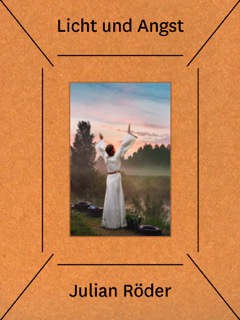
Julian Röder – Licht und Angst
Akademie der Künste / Haus am Waldsee / Verlag der Buchhandlung Walther König, Cologne, 2016
German/English
80 pp., c. 59 ill.
ISBN 978-3-96098-036-0
€ 18
Julian Röder’s images reflect structures of power, protest and consumerism, appearance and reality. In his new works, he explores metaphysical, thought or aura photography. In 2014, Röder was the Ellen Auerbach Scholar at the Akademie der Künste. A catalogue by Julian Röder, made possible by this Scholarship, is being issued in cooperation with the Haus am Waldsee to accompany Röder’s exhibition there from November this year.
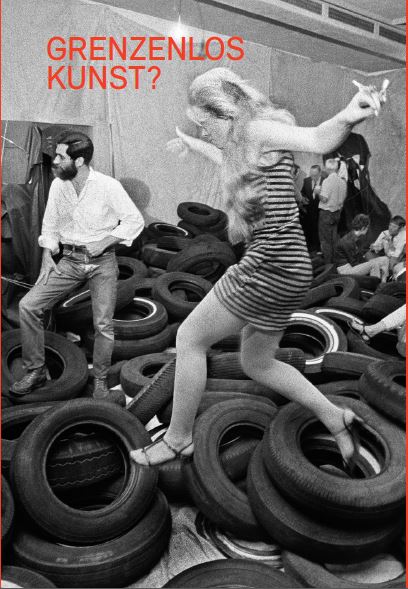
Grenzenlos Kunst?
Robert Kudielka, Angela Lammert on behalf of the Akademie der Künste (eds.)
Akademie der Künste, Berlin / Kettler, Dortmund 2016
German, 224 pp., 79 b/w ill.
ISBN 978-3-88331-217-0
Best.-Nr. 1175
€ 24
The expanding definition of a work of art and the increase of staged forms of presentation requires a review of the strongly Western European concept of art that has been in place since the 18th century. In particular, the calling into question of the dominance of painting in global art practice suggests that the authoritative role of the image in aesthetic discourse is a special feature in the European history of art. With essays by Kader Attia, Hans Belting, Thierry de Duve, Peter Galison, Helmut Lachenmann, Jean-Luc Nancy, et al.

Film als Skulptur?
Angela Lammert on behalf of the Akademie der Künste (ed.)
Akademie der Künste, Berlin / Kettler, Dortmund 2016
German, 168 pp., 116 b/w ill.
ISBN 978-3-88331-219-4
Best.-Nr. 1177
€ 22
In its formulation as a paradox for 20th century art, the thesis "Film as Sculpture?" was decidedly productive. The book documents a conference on the exhibition "Elemental Gestures – Terry Fox" and reframes the debates of the 1970s. Intersections between film, images and space are discussed by looking at artists who include Rosa Barba, Joseph Beuys, Chris Burden, Richard Buckminster Fuller, Cyprien Gaillard, Suzanne Harris, Gordon Matta-Clark, Anthony McCall, Cedric Kiefer, László Moholy-Nagy, Nam June Paik, Carolee Schneemann, Richard Serra, Roman Signer, et al.
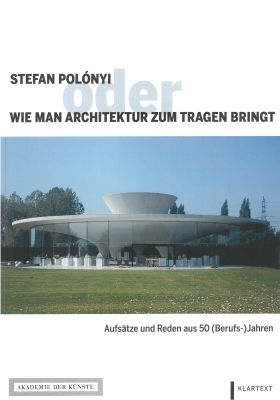
Stefan Polónyi
Wie man Architektur zum Tragen bringt.
Aufsätze und Vorträge aus 50 (Berufs-) Jahren
Akademie der Künste, Berlin / Klartext, Essen 2016
German, 368 pp., 550 ill.
ISBN 978-3-8375-1503-9
Best.-Nr.: 2068
€ 39,95
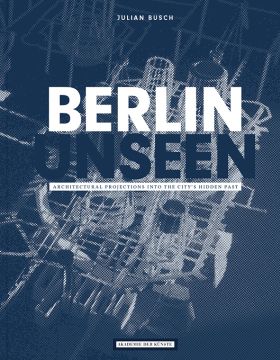
Julian Busch
Berlin Unseen. Architectural Projections into the City’s Hidden Past
Akademie der Künste, Berlin 2015
German/English, 96 pp.,
75 ill.
ISBN ISBN 978-3-88331-211-8
Best.-Nr. 2065
€ 20
Hidden and ruined places have always fascinated people. In the “Berlin Unseen” design series, Julian Busch developed architectural concepts to subject historically significant places in the German capital to new observation. It takes up the evolved characteristics of these places, gains inspiration from them and imaginatively seeks to find designs and uses for the future. These idiosyncratic ideas are presented in drawings, models and collages that bring cultural, historical, ecological and technological interests together within a spatially tangible context. Julian Busch's designs and installations have been shown at exhibitions in London, Moscow, Copenhagen, Bahrain and Germany. In 2012, he received a Berlin fellowship from the Akademie der Künste. The book contains texts by Karla Kowalski, CJ Lim and Christian Schneegass.

Künstler im Gespräch – Die West-Berliner Akademie der Künste. Fotografien von Karin Gaa
Hans Dieter Zimmermann (ed.) in collaboration with Akademie der Künste
Ripperger & Kremers, Berlin 2015
German, 136 pp., 119 ill.
ISBN 978-3-943999907
Best.-Nr. 8036
€ 19,90
The Akademie der Künste in West Berlin was an important meeting place for artists. Architects, painters, actors, musicians and writers met here for the members' general meetings that Karin Gaa captured in photographs from 1974 to 1990; her images allowing us previously unknown insights into this West Berlin institution. More important than the official events were the private conversations: Bernhard Minetti speaking with Joseph Beuys, Günter Grass laughing with Peter Weiss, Uwe Johnson with Sarah Kirsch.

Bodenlos – Vilem Flusser und die Künste
Siegfried Zielinski and Daniel Irrgang on behalf of the Akademie der Künste (eds.)
Akademie der Künste, Berlin 2015
German, 128 pp., 133 ill.
ISBN 978-3-88331-214-9
Best.-Nr. 6037
€ 14,80
In Vilém Flusser's approach to rethinking the arts in face of our fundamentally technologically determined existence, a new concretion is only possible by passing through radical abstraction and calculation. In his view, the technical image as artistic imagination offered an alternative to constantly reproducing the same – and he elaborated this new faculty of imagination both in his writings and in dialogue with artists. The publication addresses Flusser's dynamic relationship to the arts, enhancing the exhibition with contributions to the current research and new materials.

Elemental Gestures – Terry Fox
Arnold Dreyblatt, Angela Lammert on behalf of the Akademie der Künste (eds.),
Akademie der Künste, Berlin / Kettler, Dortmund 2015
German/English: ISBN 978-3-86206-515-8
French/English: ISBN 978-3-86206-524-0
312 + 24 pp., 341 ill.
Best.-Nr. 1172
€ 39
The catalogue contains texts by international authors such as David Ross, Constance Lewallen and Lisa Steib, previously unknown works and documents like work notes and sketches, as well as recently written statements penned specifically for the exhibition by Fox's contemporaries, including Vito Acconci, Tom Marioni and Bill Viola. The book differentiates between documentary recording and an "art piece" used to capture the creation of a performance in a photograph or video. Funded by the Rudolf Augstein Stiftung.
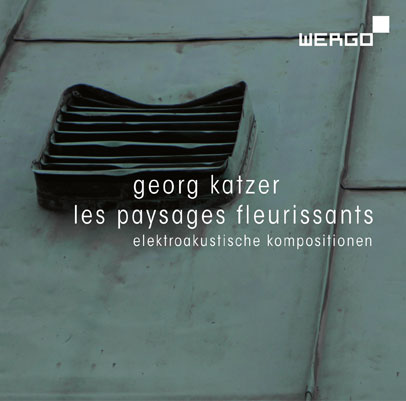
Georg Katzer – Les paysages fleurissants. Electroacoustic Compositions from Four Decades
Studio for Electroacoustic Musik at the Akademie der Künste (ed.)
Akademie der Künste, Berlin / Schott Music, WERGO, Mainz 2015
CD, 70 min
German/English booklet, 20 pp., 7 ill.
WER 73382
Akademie-Best.-Nr. 31052
€ 18,50
Georg Katzer (*1935) studied composition with Rudolf Wagner-Regeny and Ruth Zechlin. He was a master student of Hanns Eisler at the Deutsche Akademie der Künste, Berlin (in East Germany). At the beginning of the 1980s he founded the Studio for Electroacoustic Music at the Akademie der Künste of the GDR. The CD is published on the composer's 80th birthday.

lens-based sculpture.
Die Veränderung der Skulptur durch die Fotografie
The Transformation of Sculpture through Photography
Bogomir Ecker, Raimund Kummer, Friedemann Malsch, Herbert Molderings im Auftrag der Akademie der Künste und des Kunstmuseums Liechtenstein (Hg./ed.) Akademie der Künste, Berlin
Akademie der Künste, Berlin / Verlag der Buchhandlung Walther König, Köln 2014
German/English, 450 pp.,
408 ill.
ISBN ISBN 978-3-88331-203-3
Best.-Nr. 1164
€ 12
The richly illustrated catalogue book with texts by Michel Frizot, Ursula Frohne, Friedemann Malsch, Herbert Molderings, Dietmar Rübel and Annette Tietenberg as well as a picture essay by Bogomir Ecker and Raimund Kummer provides insights into the multi-layered art-scientific and artistic research on the phenomena of “lens-based sculpture”. It focuses on how modern sculpture became detached from the millennia-old principle of the statue through photography and transformed into a new artistic practice in which the whole of reality with its manifold tactile, spatial and medial phenomena becomes sculptural material. The camera serves as the primary sculpting tool, as a sketchpad and a tool for transforming spatial and structural renderings into mass and form. The term “lens-based sculpture”, used here for the first time, denotes a new perspective on sculpture and the history of art in the 20th and 21st centuries. The synopsis of around 150 exhibits by more than 70 international artists shows how fundamentally sculpture has changed in the past under the influence of photography and film.

Junge Akademie 2011
Insights
Dokumentation
Akademie der Künste, Berlin 2011
English
96 pp., 112 ill.
Best.-Nr. 1027
Fellows of the Akademie der Künste, 2011, projects, workshop
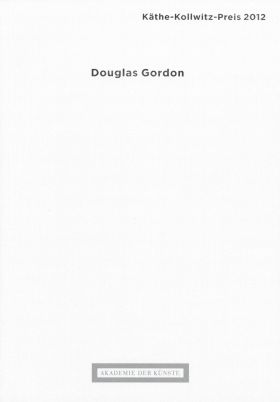
Douglas Gordon
Käthe-Kollwitz-Preis 2012
Akademie der Künste, Berlin 2012
German/English, 48 pp.,
26 Farb-Abbildungen ill.
Best.-Nr. 9027
€ 7
In his catalogue essay, Keith Hartley acknowledges the irony and political implications in Douglas Gordon’s art, which he derives from Brecht and Thomas Mann. Besides the conceptual aspect, the intuitive character of his works is important to Gordon. He wants to analyse processes of consciousness and, in particular, to better understand the role of memory in the perception of past and present. However, he does not do this by addressing only the brain. Rather, he uses the sensual qualities of art to make the viewer feel what he is trying to express.
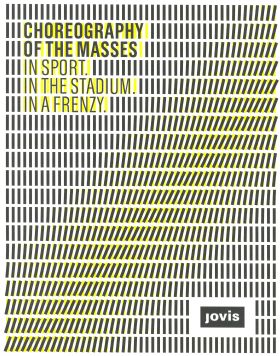
Gert Kähler
Choreography of the Masses. In Sport. In the Stadium. In a Frenzy.
Volkwin Marg for the Akademie der Künste, Berlin (Ed.)
Akademie der Künste / Jovis Verlag, Berlin 2012
232 pp., 228 ill.
English edition
ISBN 978-3-86859-170-5
Best.-Nr. 2061
out of print
Prompted by the UEFA EURO 2012 football championship, the Akademie der Künste, Berlin is dedicating this book to a key topic in the public realm: the stadium as a setting for mass events. In six chapters, Volkwin Marg, member of the Academy and a founding partner of gmp von Gerkan, Marg and Partners Architects – together with Michael Kuhn (gmp) and the architectural historian Gert Kähler develops the cultural historic interaction between sport, architecture and fan culture. The story begins with the competitions in ancient times with their sacral background, and leads to today’s Games with their political and commercial aspects. The authors place sport and sports buildings in the context of the social and political situation in antiquity, during National Socialist rule and in the post-war era: the stadium as a built reflection of social organization.
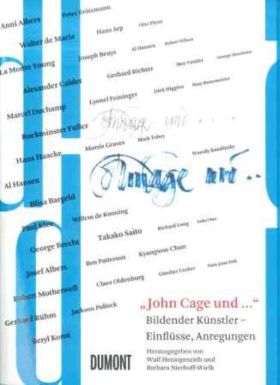
"John Cage and …"
Visual artist – influences, inspirations
Wulf Herzogenrath und Barbara Nierhoff-Wielk (Hg.)
DuMont, Köln 2012
German/English, 320 pp.,
252 ill.
ISBN 978-3-8321-9444-4
Best.-Nr. 1156
€ 12
As a multi-talented artist, John Cage had a decisive influence on the development of music and the visual arts. This publication focuses on Cage, the visual artist, and dares to take a new look at theoretical references, the artistic environment and reception in Europe. At the same time, it provides an overview of the genesis of Cage’s work from the 1930s on and his relationships to the artists of Classical Modernism in Europe. Essays by Jon Hendricks, Andreas Kreul, Angela Lammert, Jeffrey Saletnik, Toni Stooss, Yvonne Ziegler and others illuminate these aspects.

Archive zur Musik des 20. und 21. Jahrhunderts, Band 13
Alexander Goehr
Fings ain't wot they used t'be
Werner Grünzweig (Ed.)
Akademie der Künste, Berlin / Wolke Verlag, Hofheim 2012
English, 160 pp.
facsimile, with Audio CD
ISBN 978-3-936000-28-3
Best.-Nr. 3043
€ 24
With contributions by Paul Griffiths and Werner Grünzweig and a autobiographical essay by Alexander Goehr
Catalogue of the music manuscripts in the Alexander Goehr Archive

Anastasia Khoroshilova
Starie Novosti. Old News
Ellen-Auerbach-Stipendium 2010
Verlag für moderne Kunst Nürnberg 2011 English/Italian/German
72 pp., 40 ill.
ISBN 978-3-86984-208-0
Best.-Nr. 6016
out of print
Texts by Vasili Tsereteli and Jeanette Zwingenberger
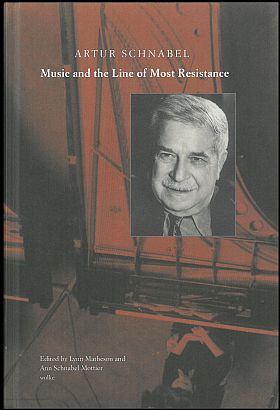
Artur Schnabel
Music and the Line of Most Resistance
Lynn Matheson and Ann Schnabel Mottier (eds.)
Akademie der Künste, Berlin / Wolke Verlag, Hofheim 2007
144 pp.
ISBN 978-3-93-6000-51-1
Best.-Nr. 3037
€ 24
With musical masterpieces, you never come to an end because every interpretation is merely an approximation of an unattainable ideal. To this day, Schnabel’s main argument in the lectures held in Chicago in 1940 represents a valid polemic position for every serious musician.